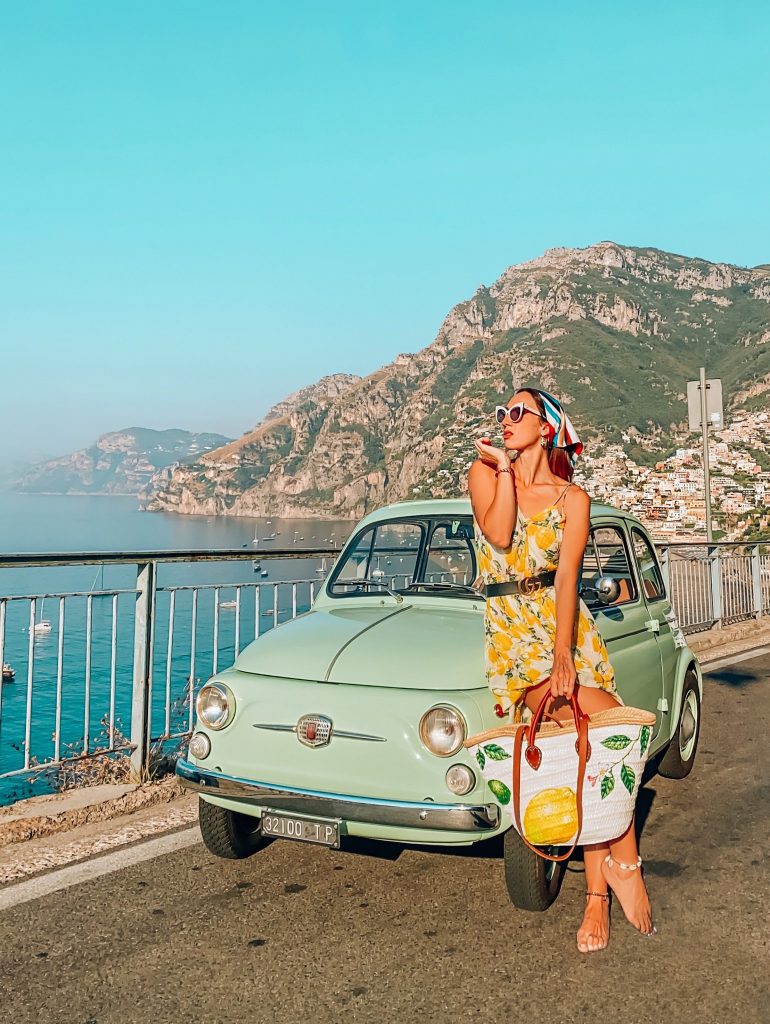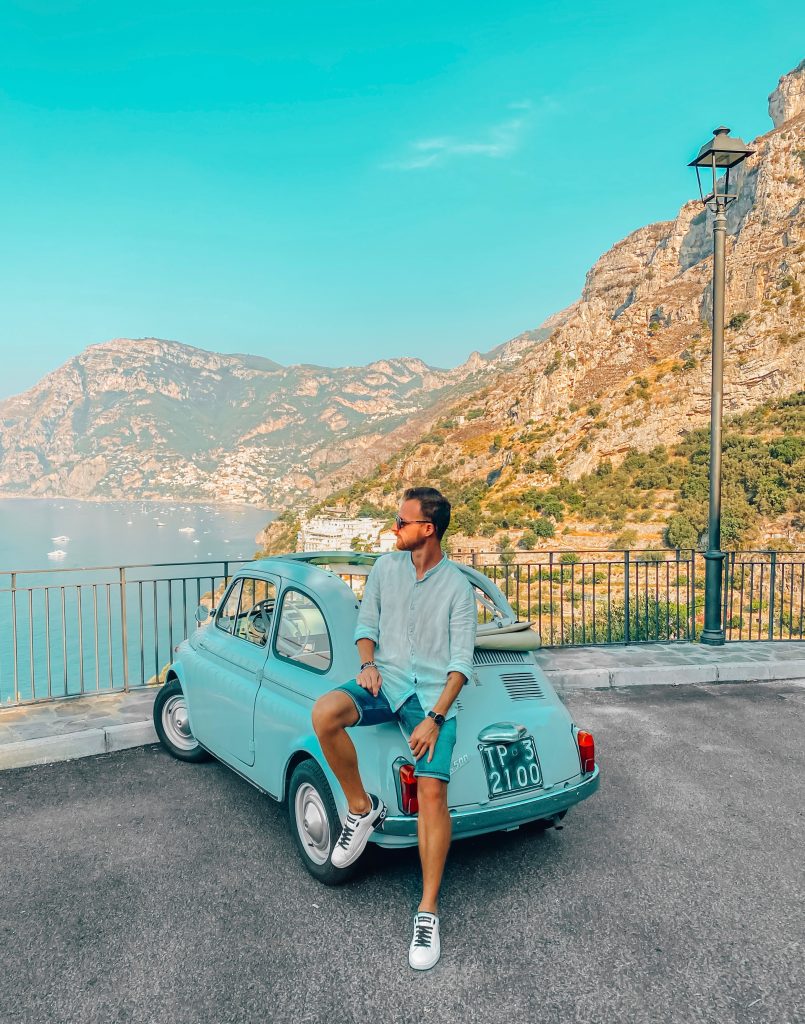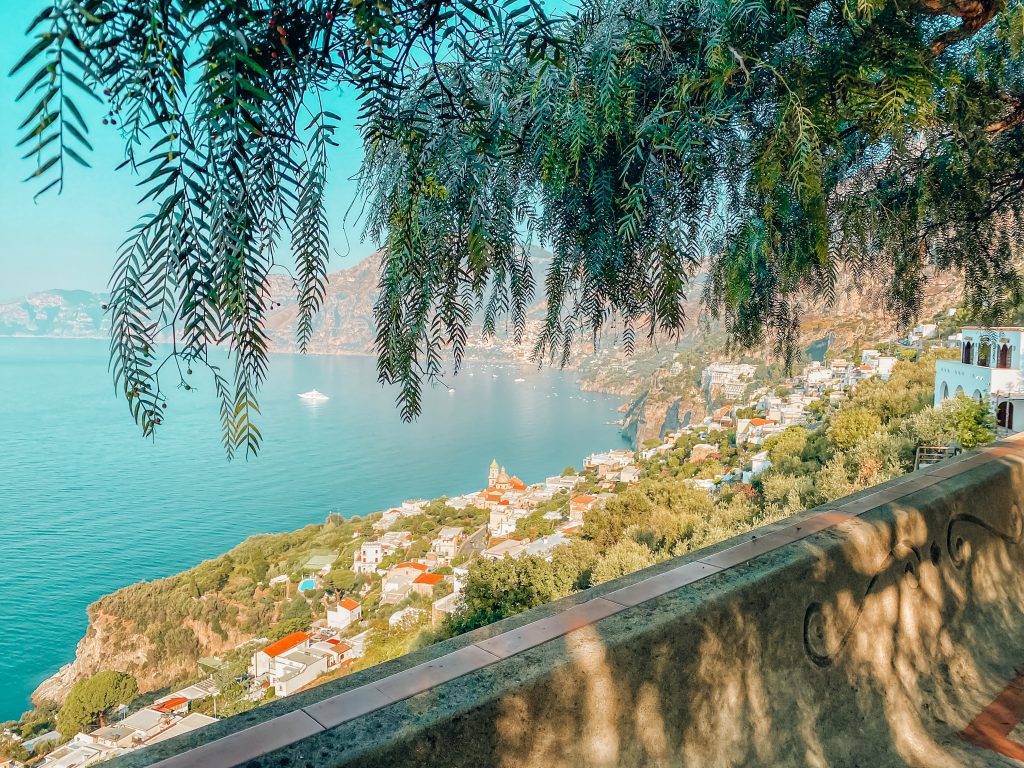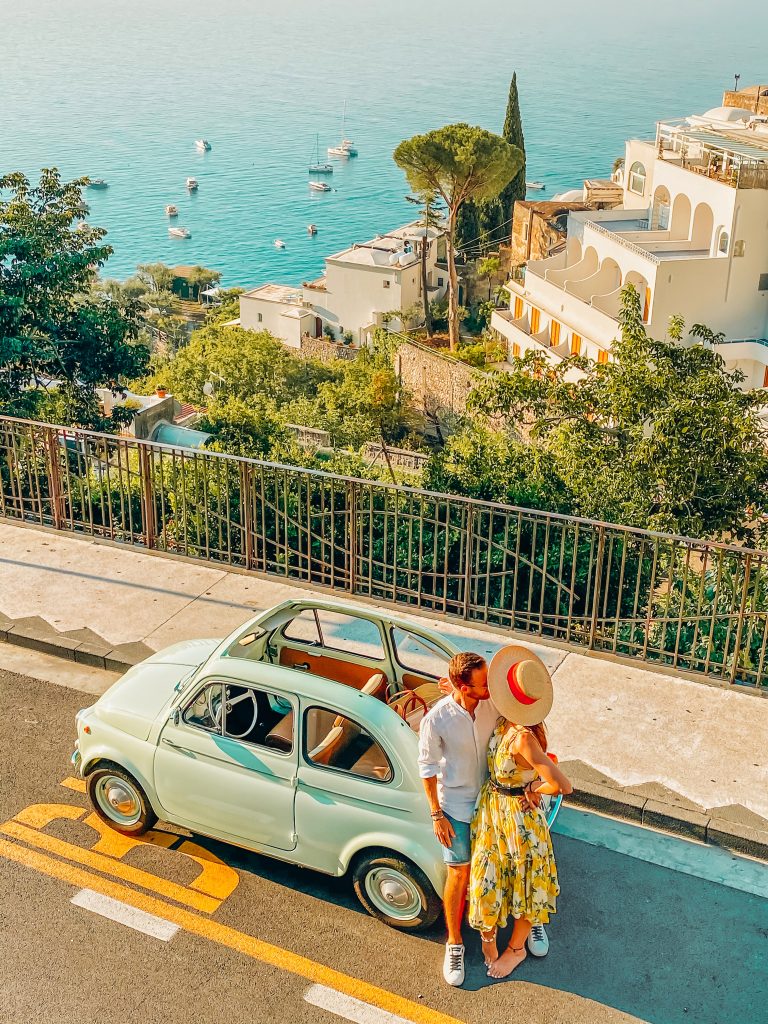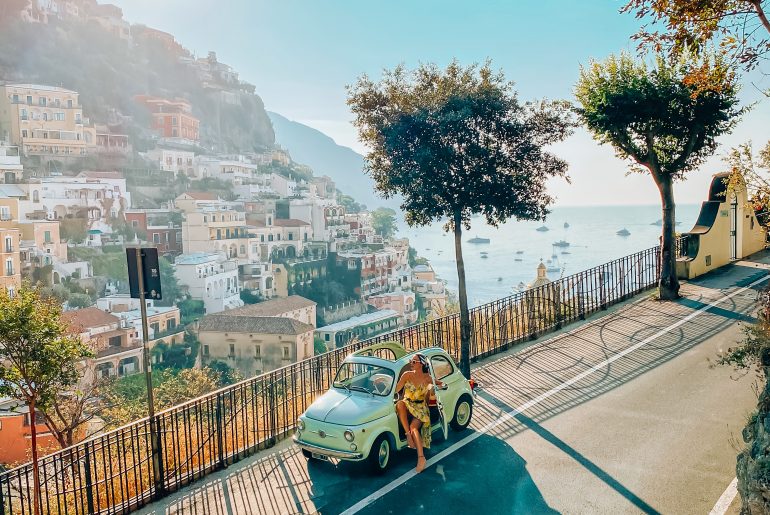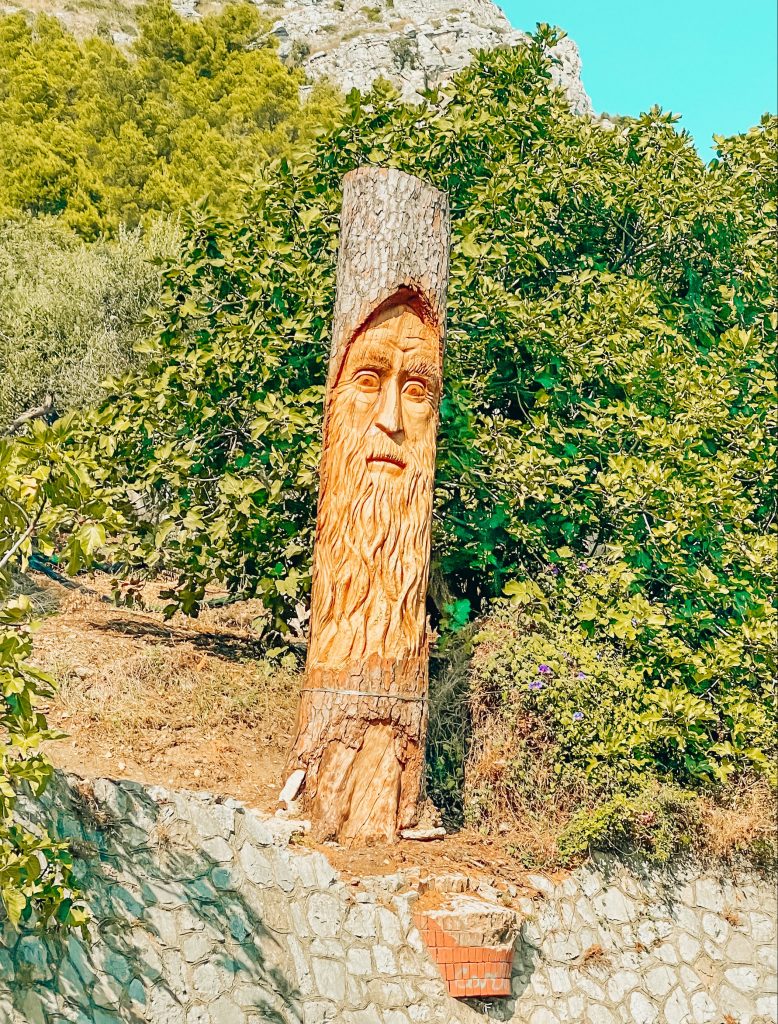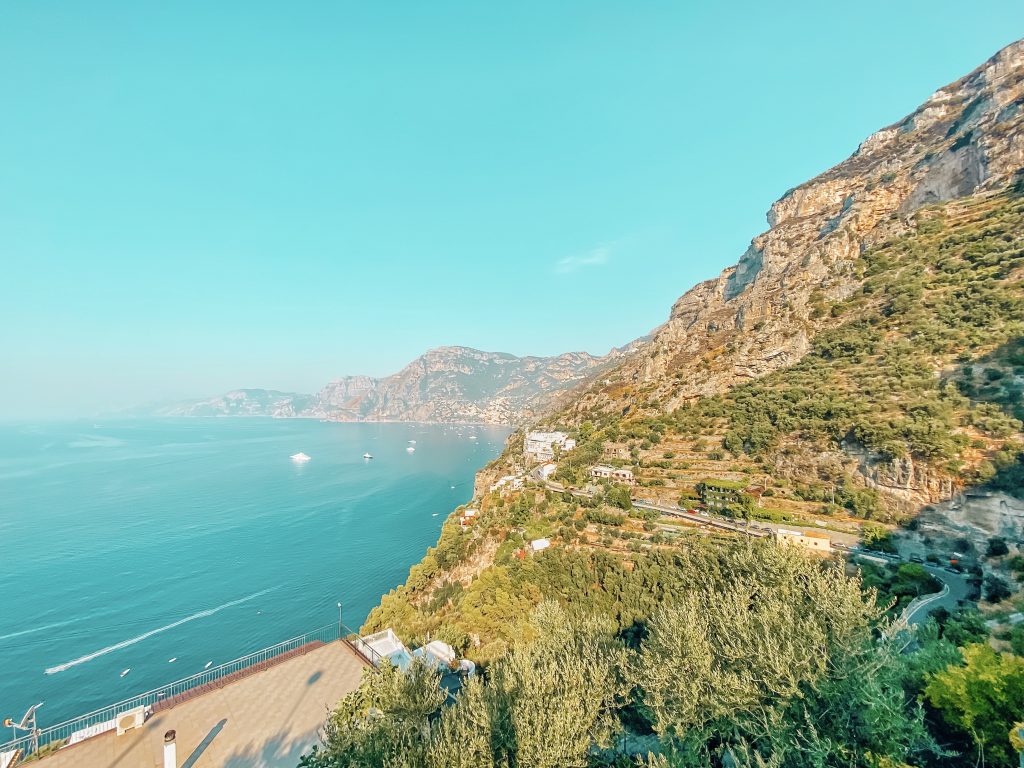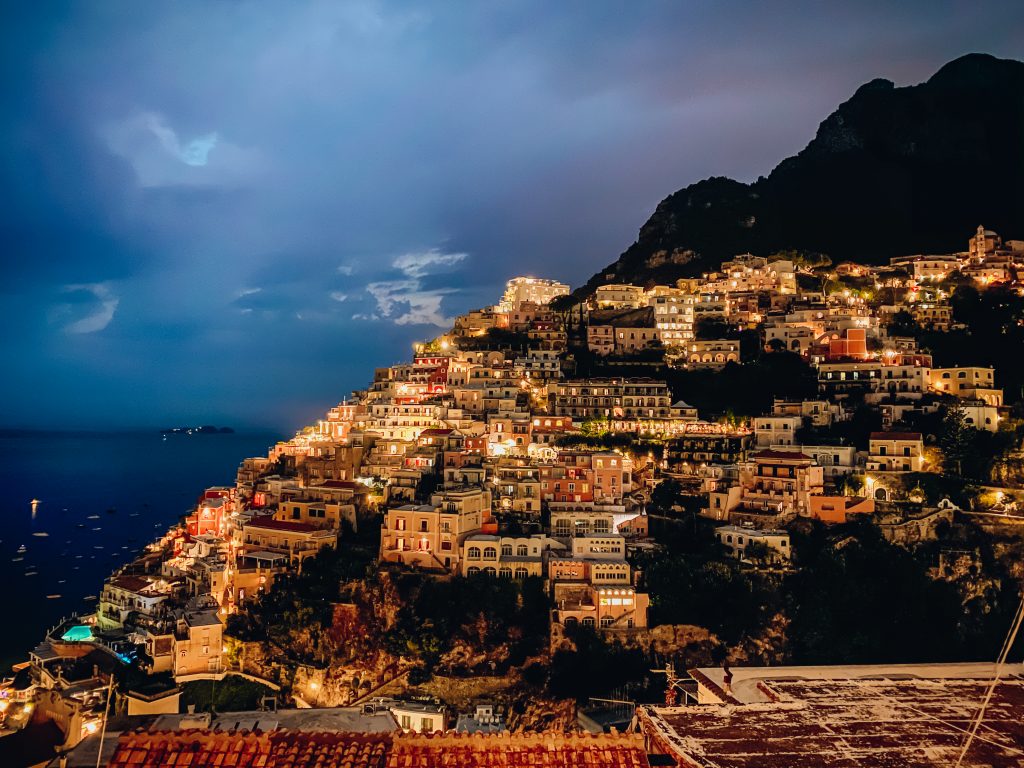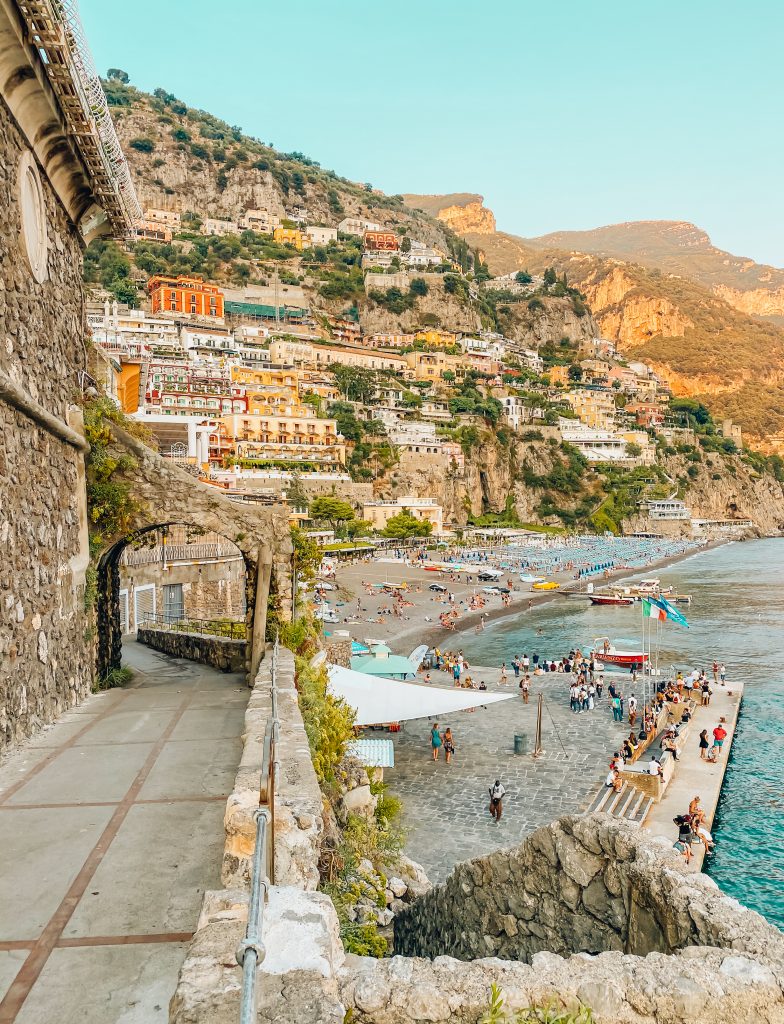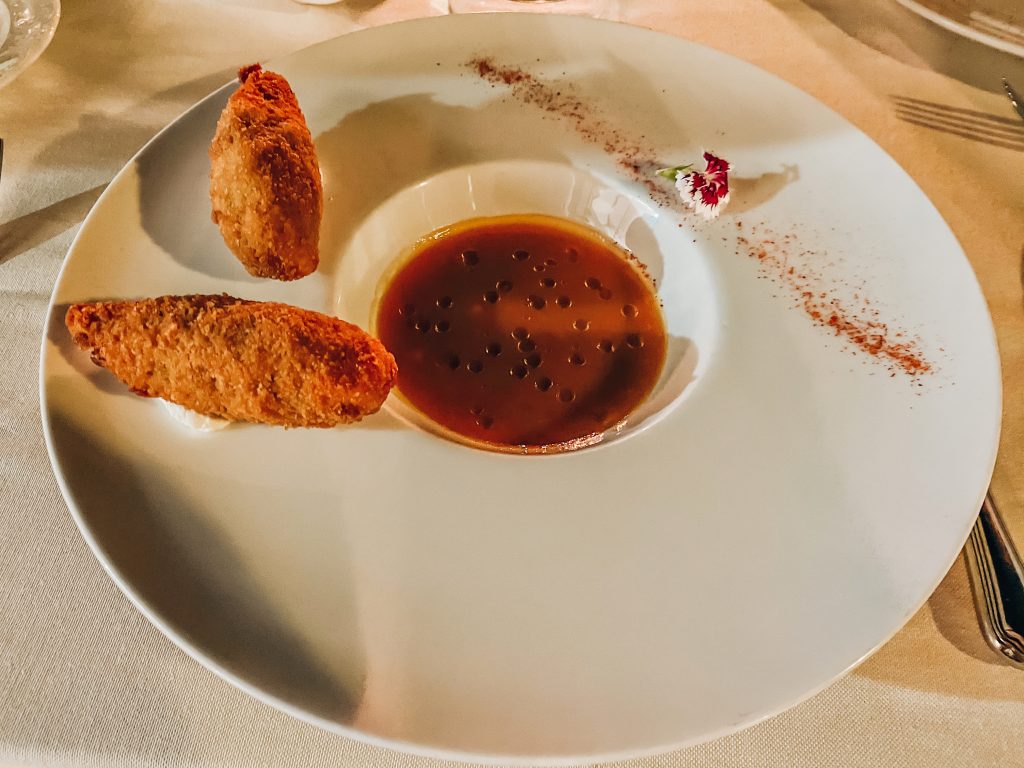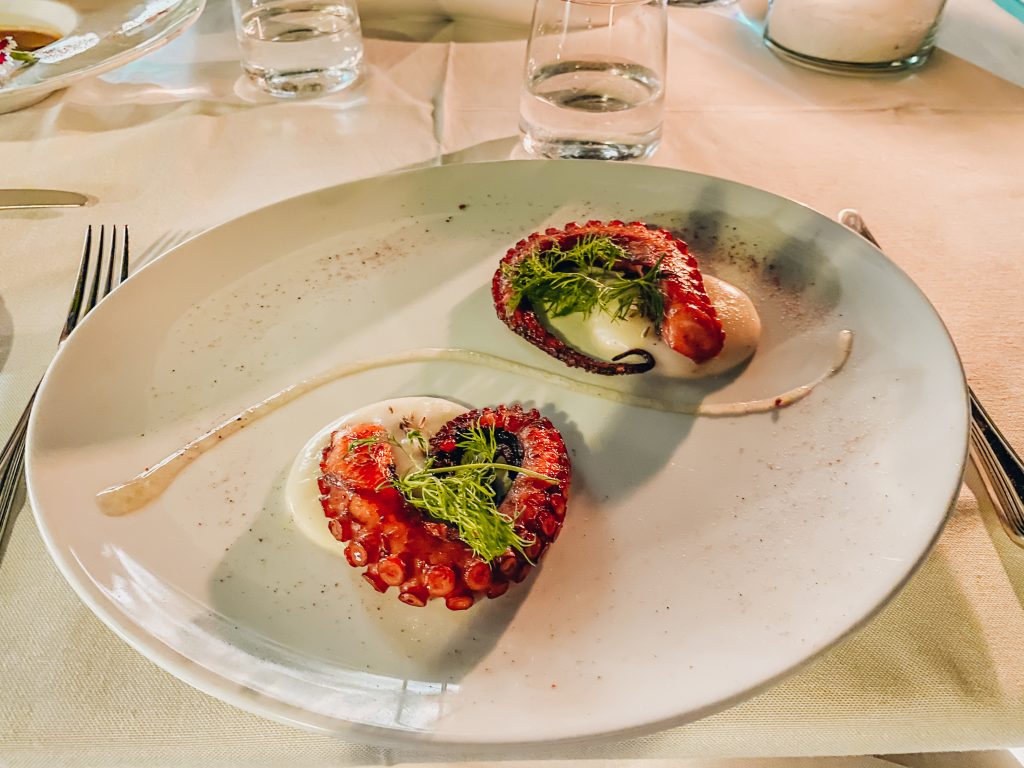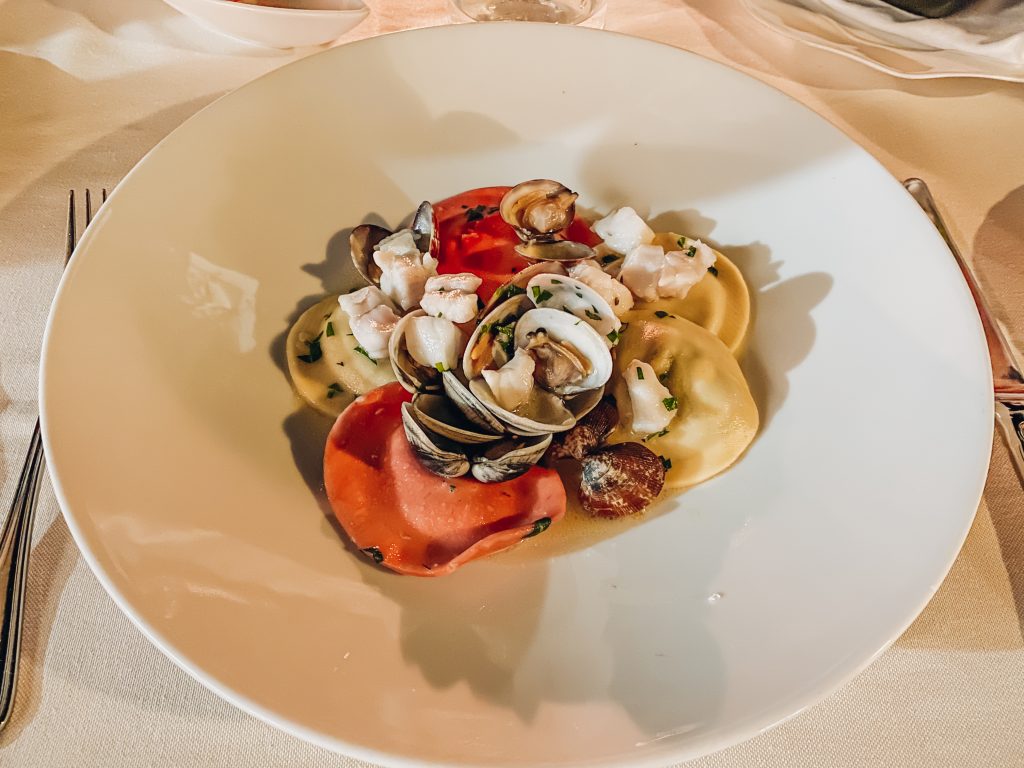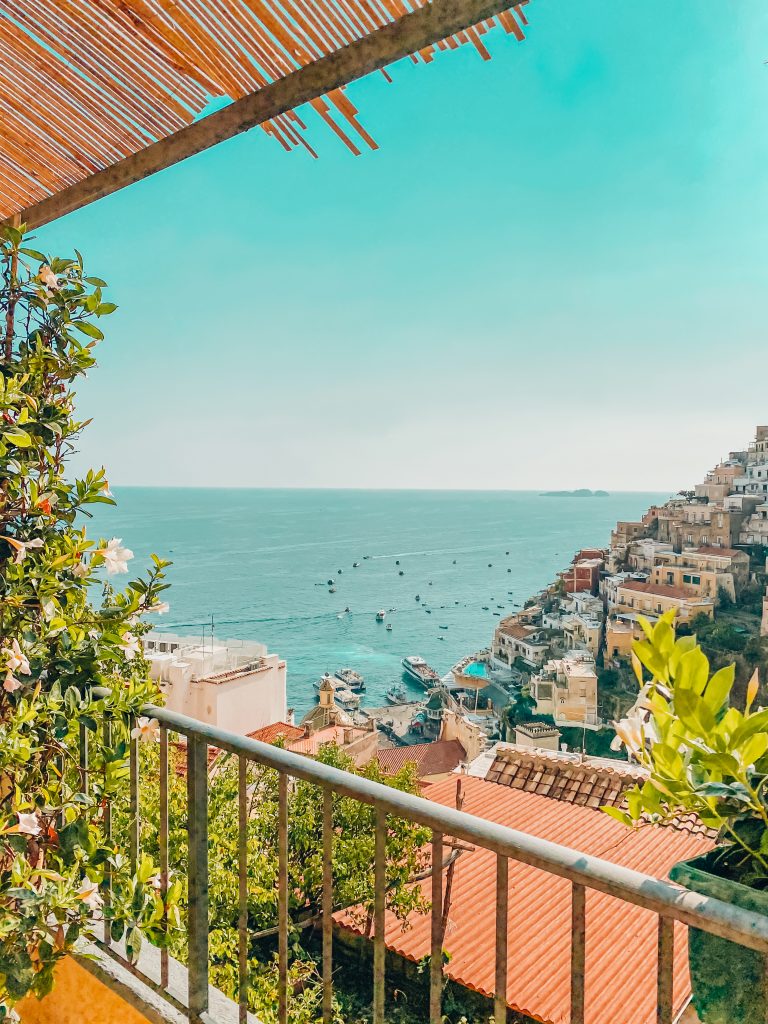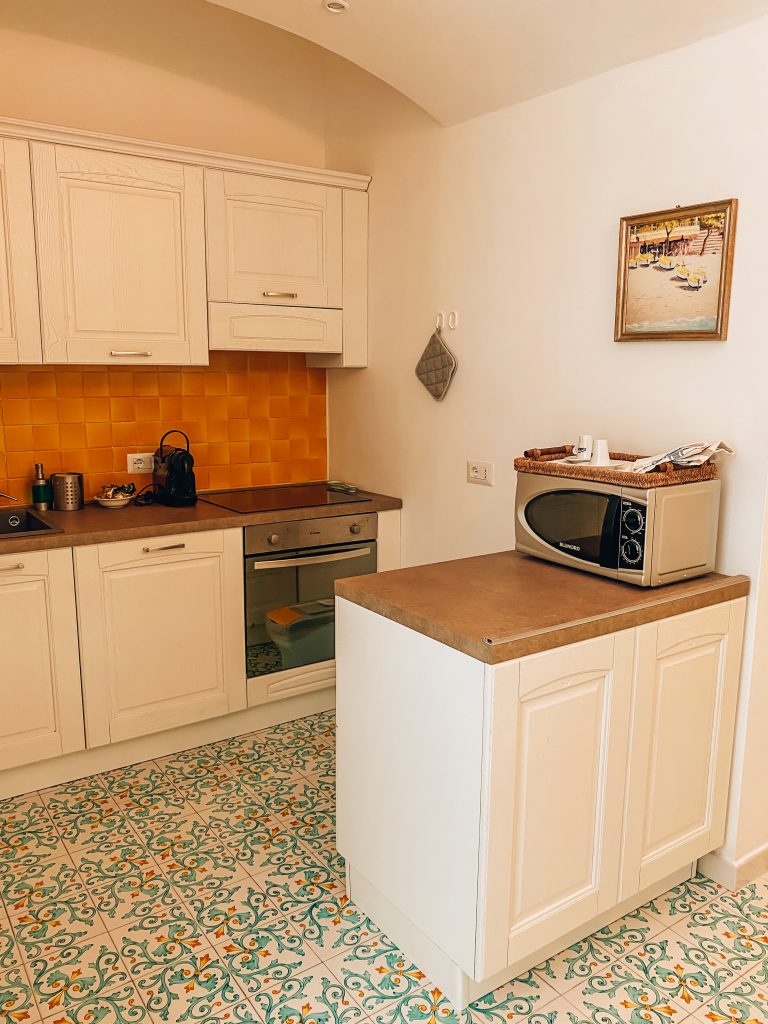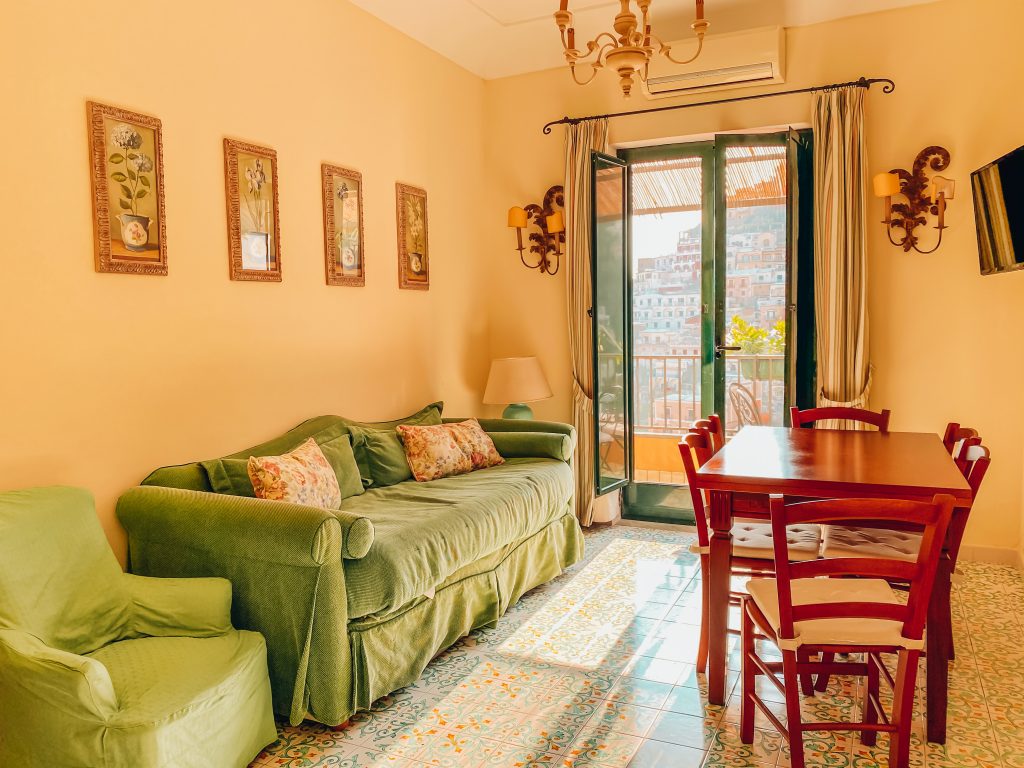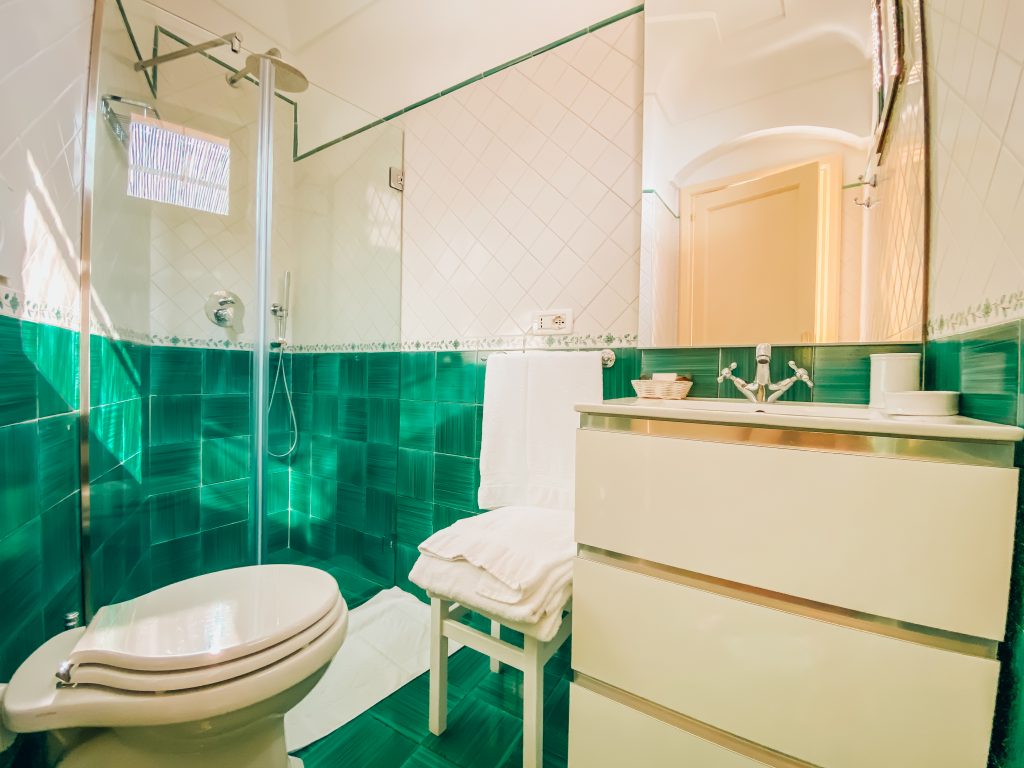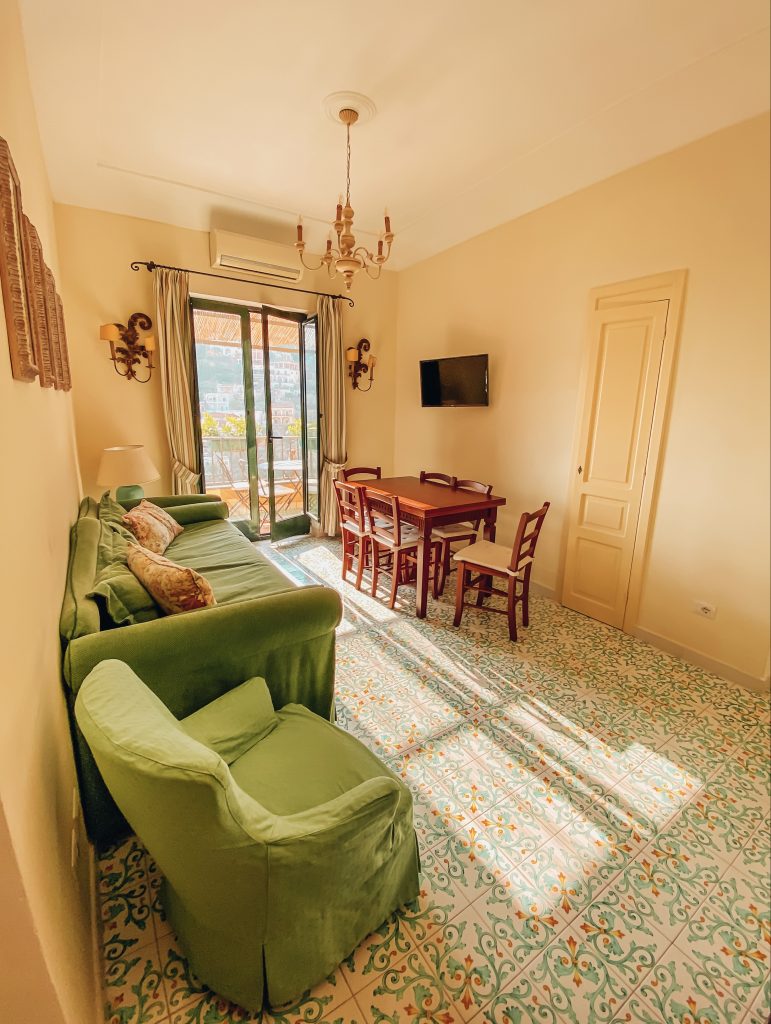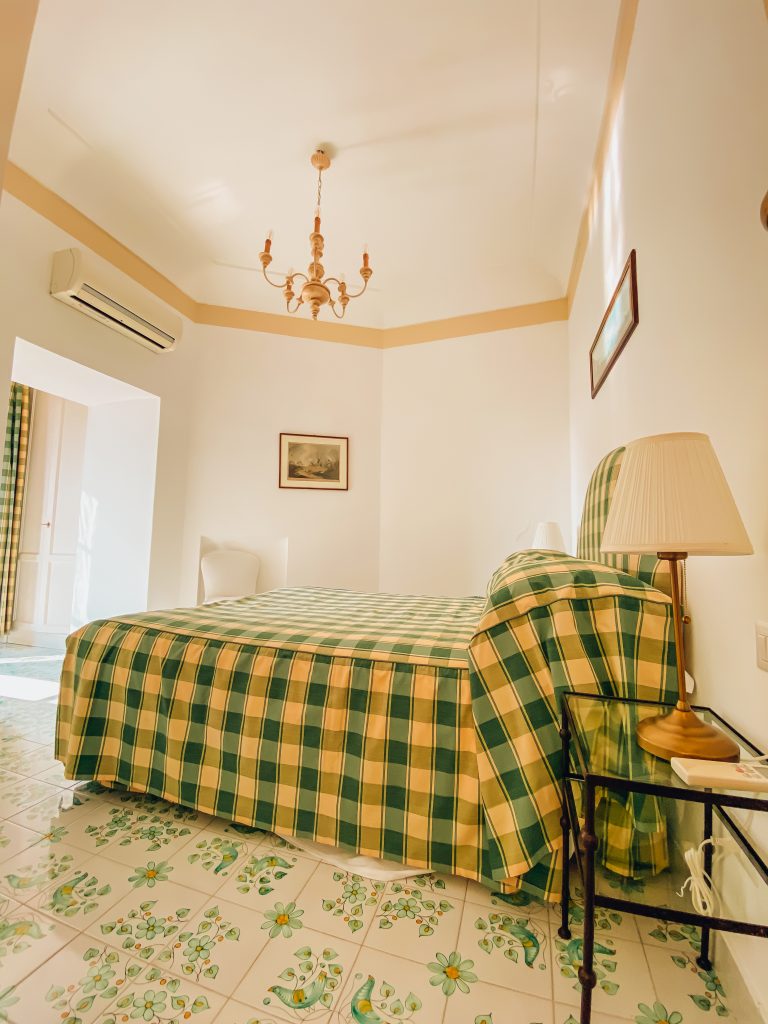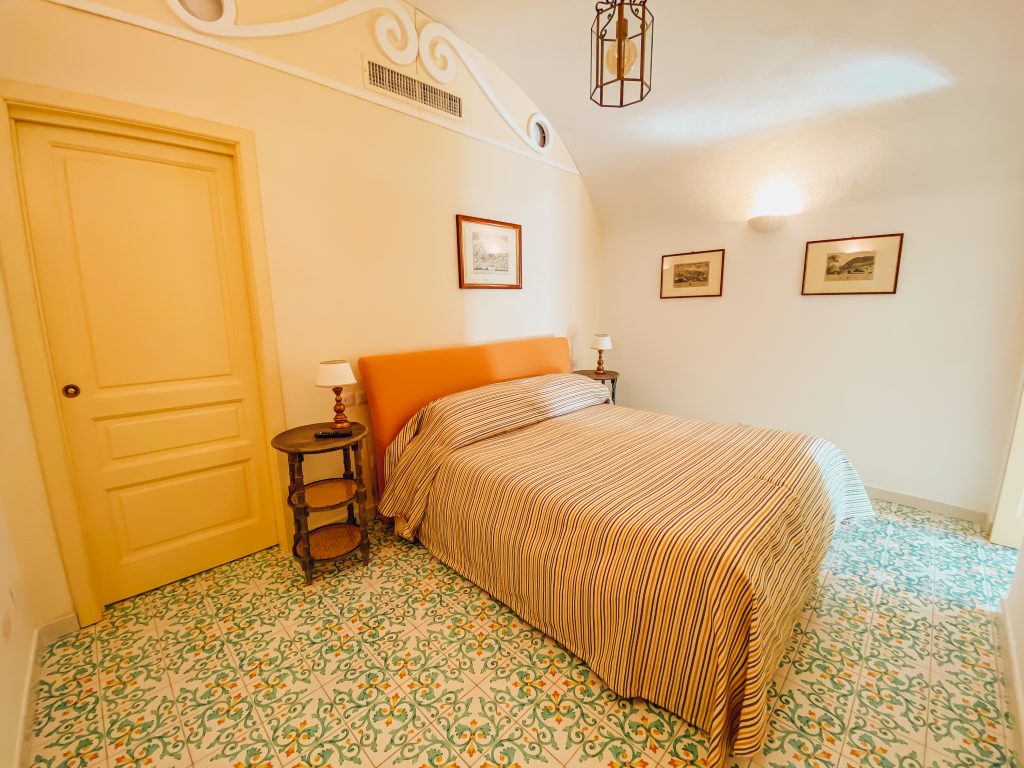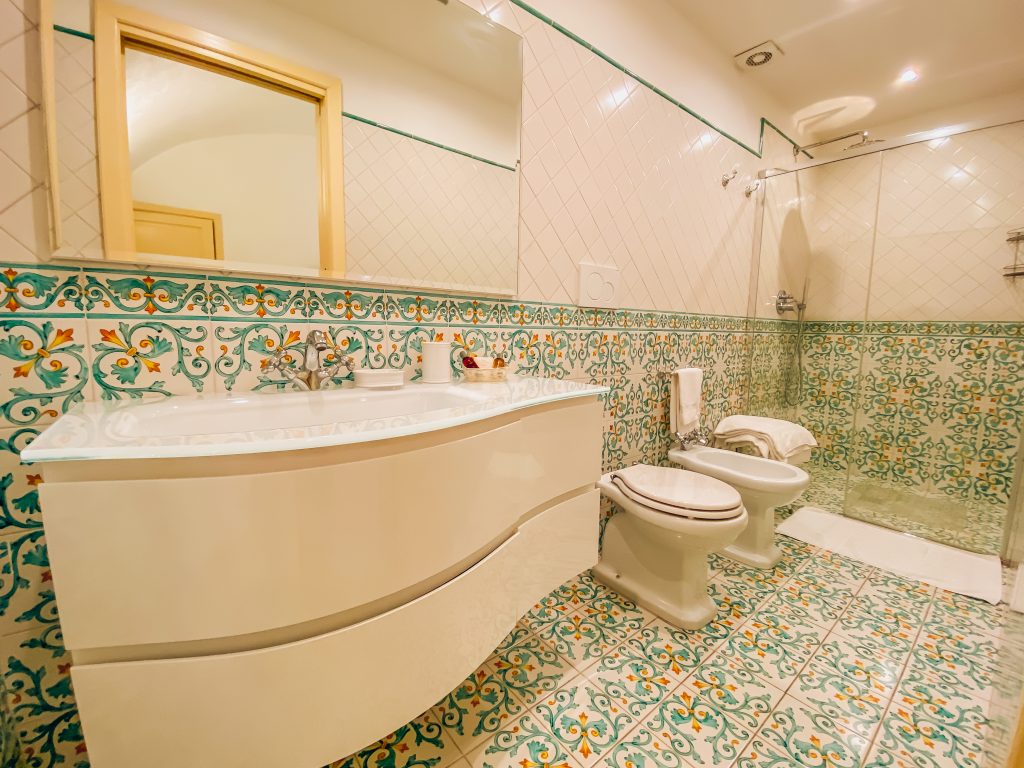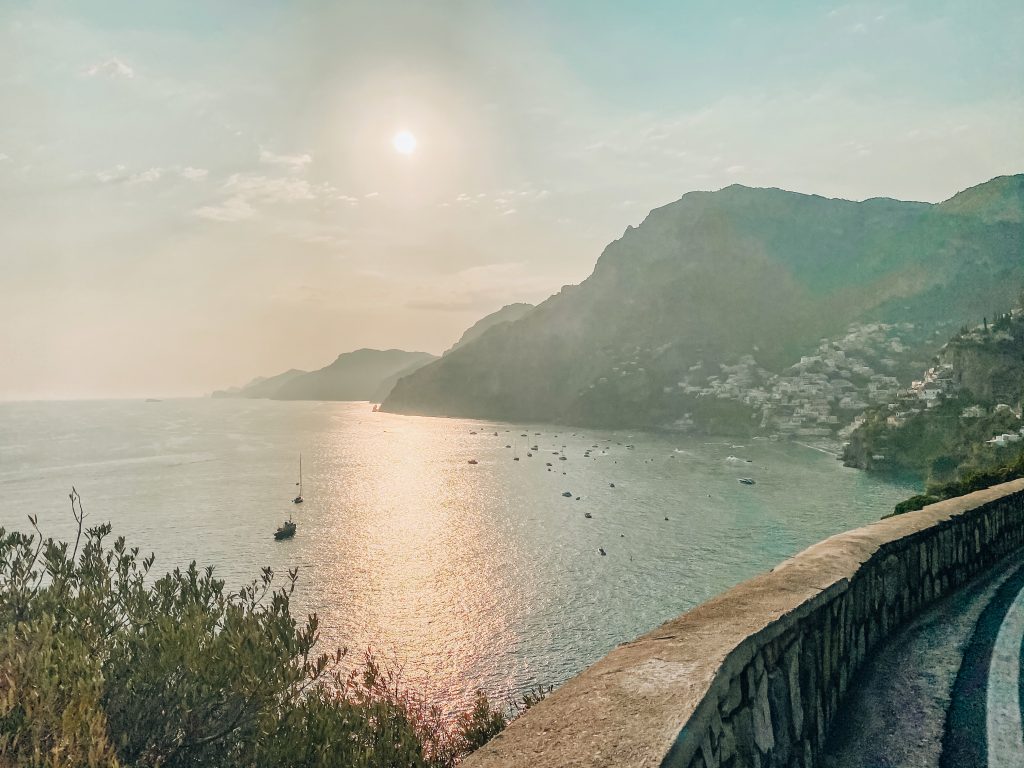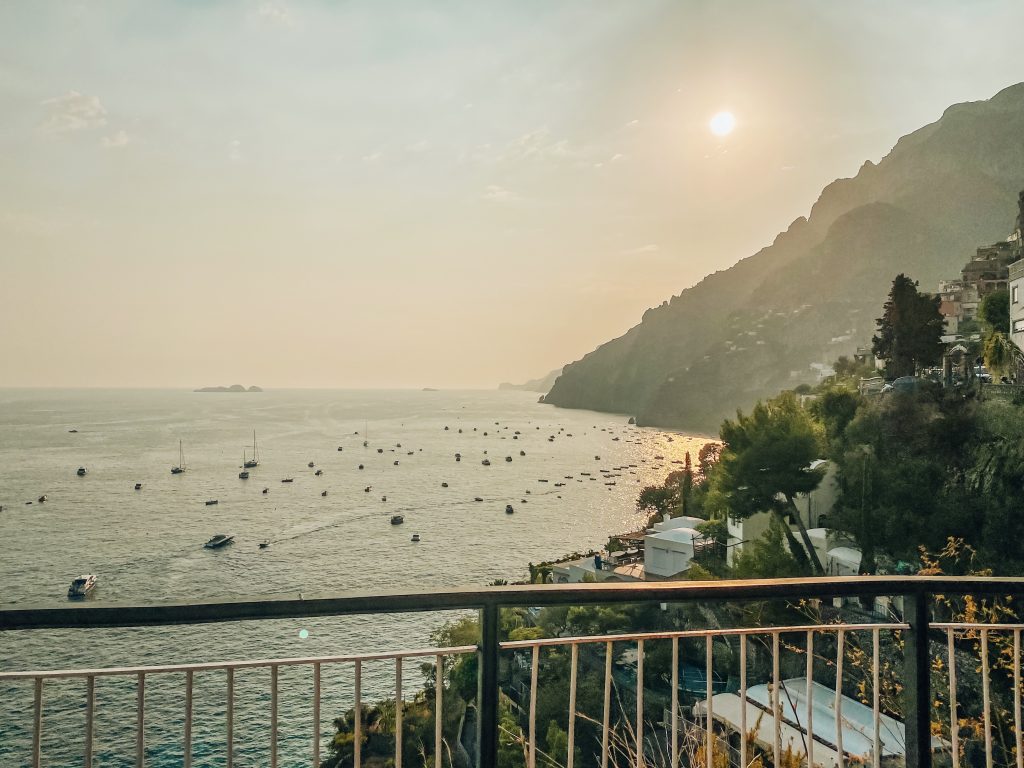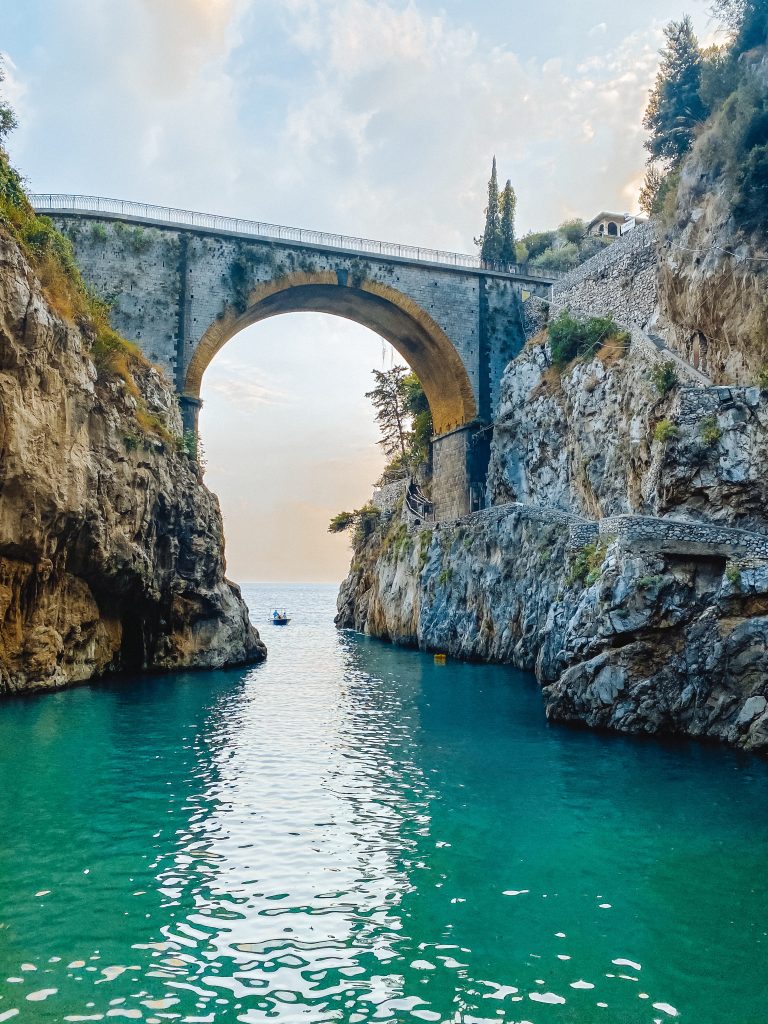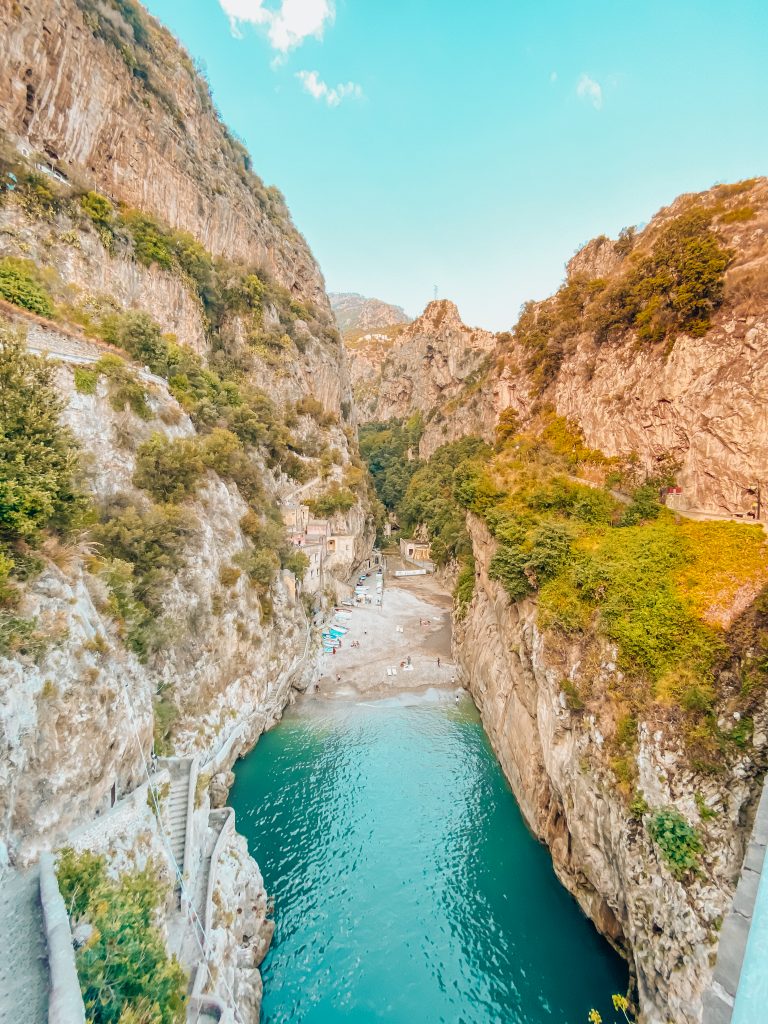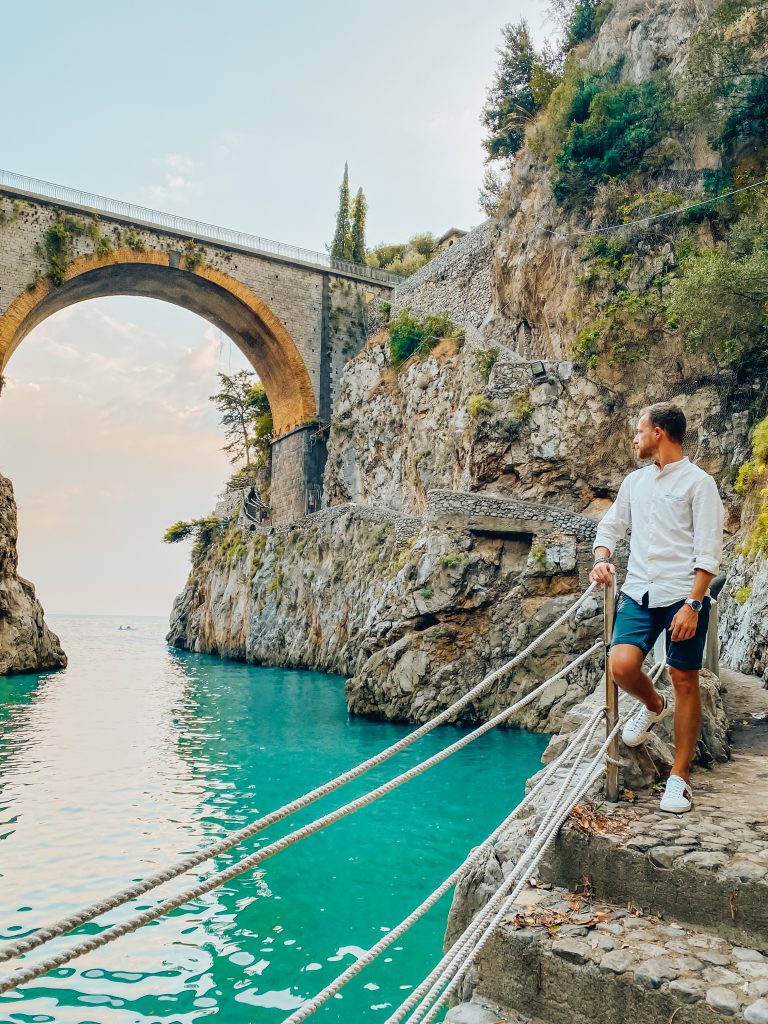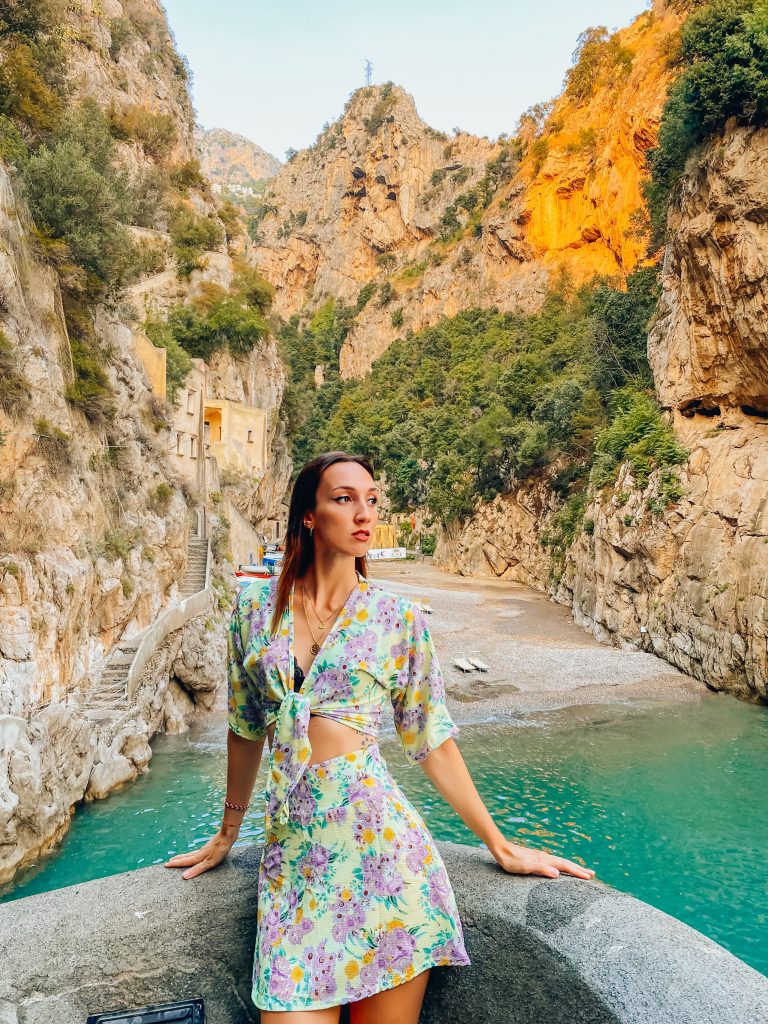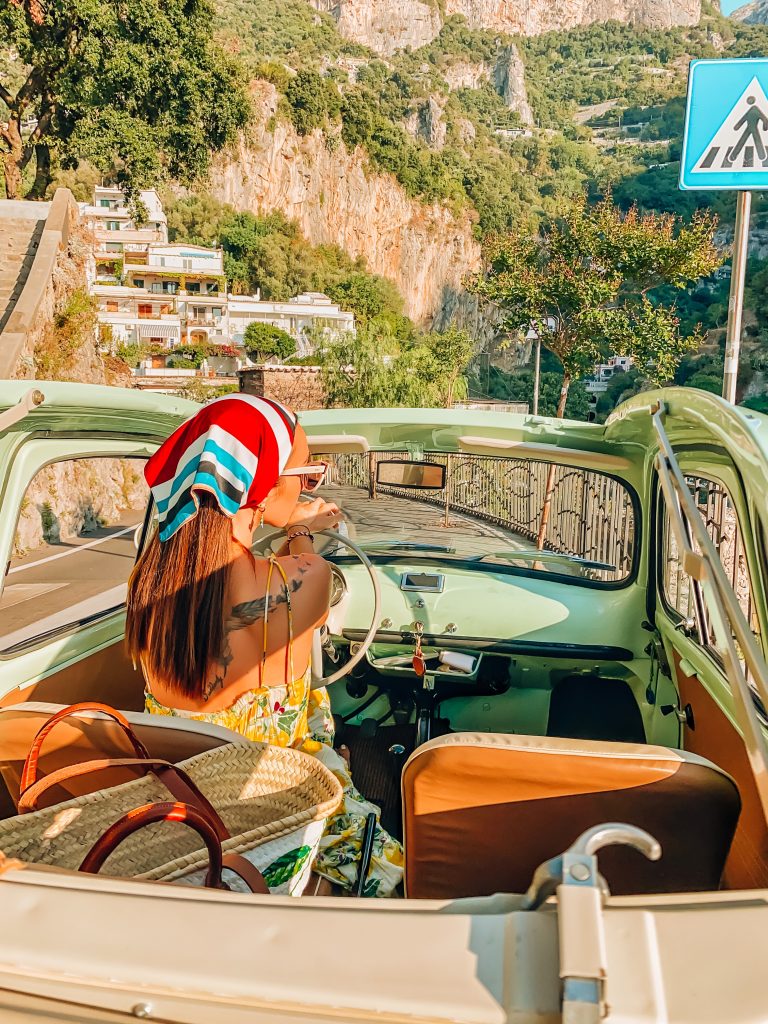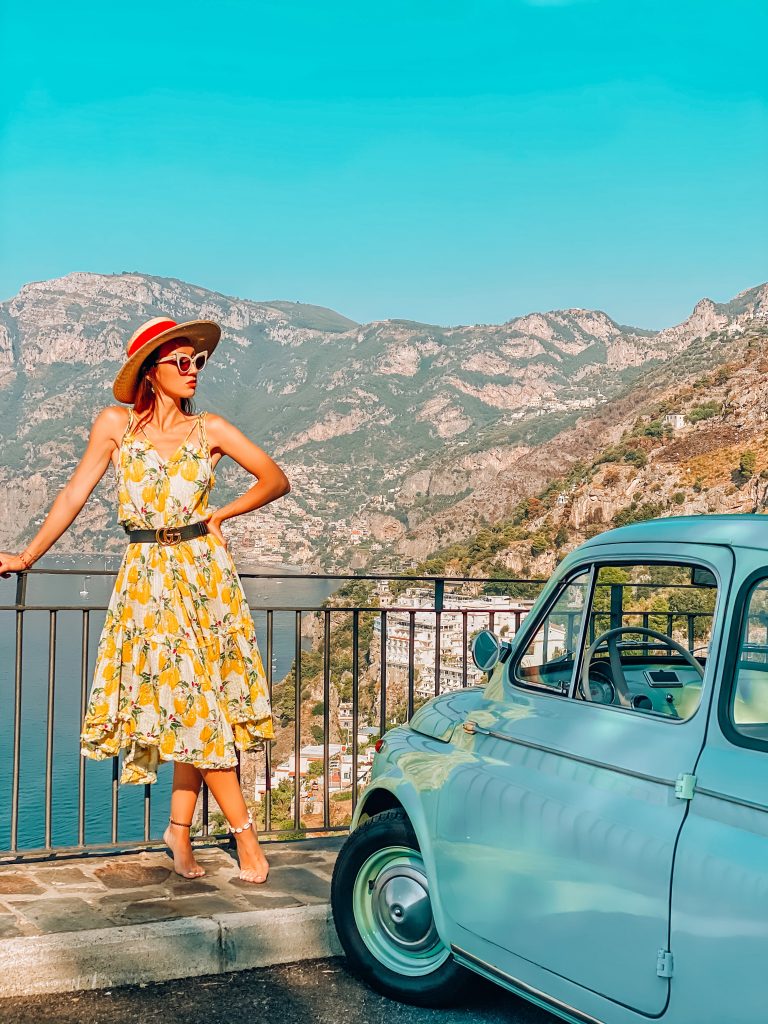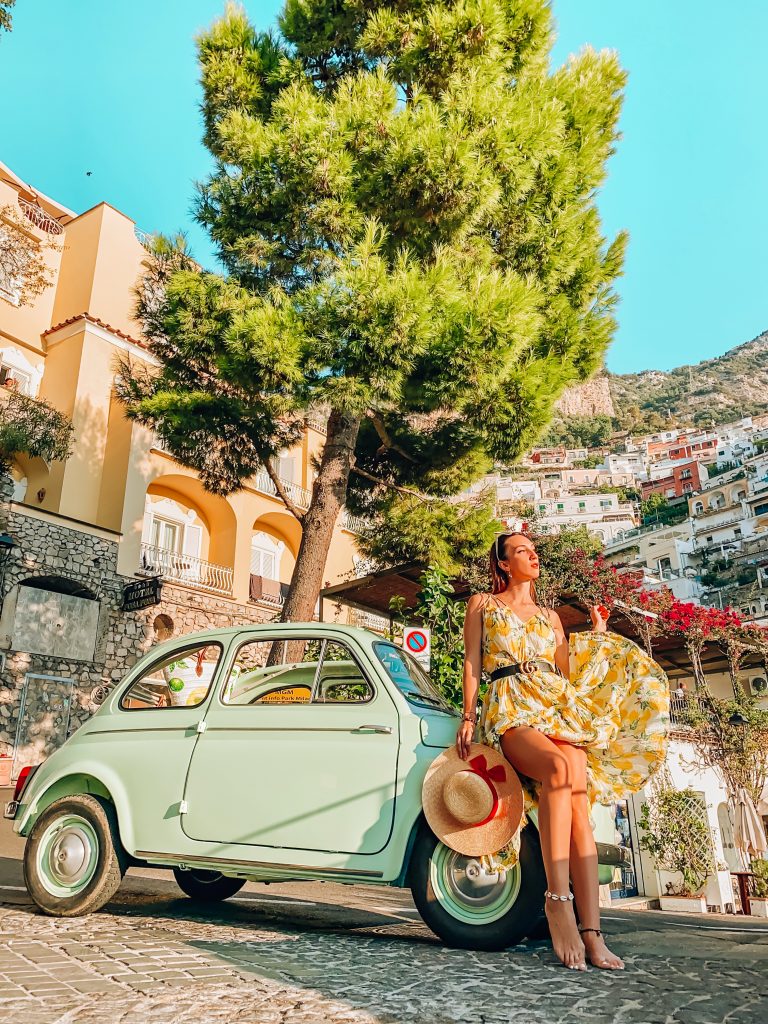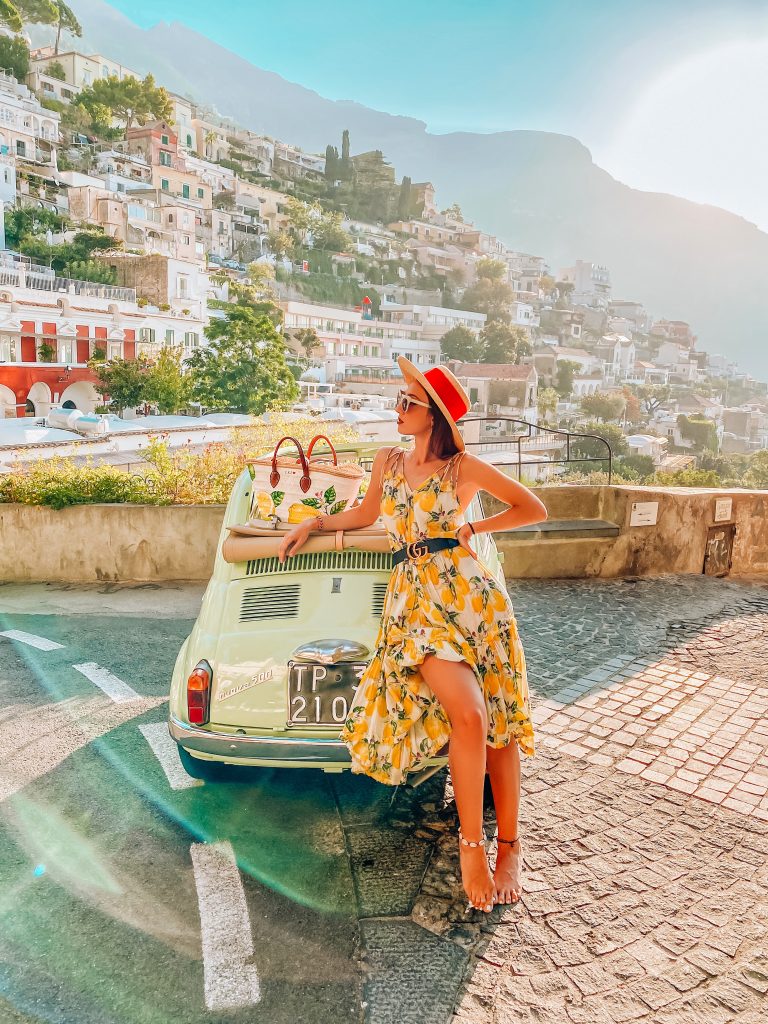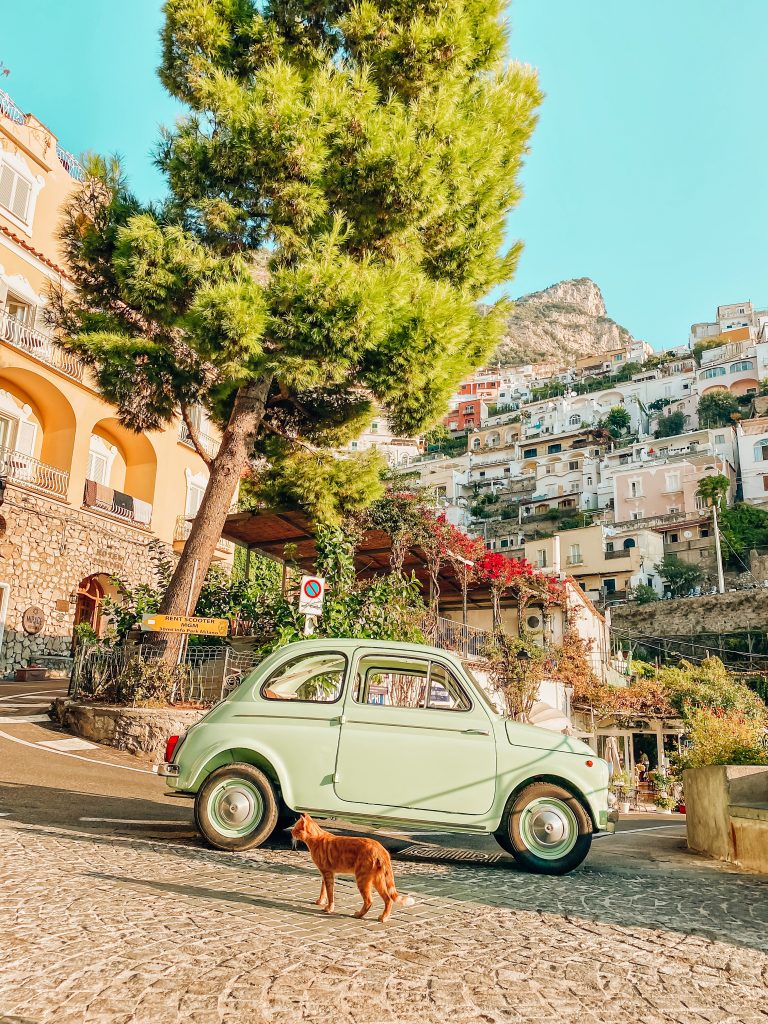Buon 2021, amici miei!
Il famoso detto recita “Anno nuovo, vita nuova”. Stavolta, però, spero solo che non sia peggio del 2020 e che finalmente potremo tornare a vivere e a viaggiare in libertà!
Per ora, continuo a rovistare tra i miei ricordi di questo “particolare” anno che si è appena concluso e vi porto con me nel nostro mini tour della splendida e unica Costiera Amalfitana.
Dopo quasi 10 anni che stiamo insieme, finalmente io e Nicola siamo riusciti a fare una breve ma intensa vacanza in uno dei posti che amo di più della nostra meravigliosa Penisola. Ebbene sì, lui non c’era mai stato! 😱
Per me, invece, è stata l’ennesima occasione per poterla rivedere.
Ma ogni volta che metto piede in questo incantevole tratto di costa, mi emoziono come se fosse la prima!
I paesini sono davvero tanti ma visitarli tutti in 5 giorni era matematicamente e fisicamente impossibile.
Così, per il momento, abbiamo deciso di concentrare la nostra attenzione su Positano e Amalfi, con qualche breve sosta a Furore, Ravello e Praiano.
Happy 2021, my friends!
The famous saying goes “New year, new life”. This time, however, I only hope that it won’t be worse than 2020 and we’ll finally be able to come back to live and travel freely!
For now, I continue to rummage through my memories of this “particular” year just ended and I’ll take you with me on our little tour of the splendid and unique Amalfi Coast.
After almost 10 years of being together, Nicola and I finally managed to take a short but intense holiday in one of the places I love most of our wonderful Peninsula. Yes, he had never been there! 😱
For me, however, it was the umpteenth opportunity to be able to see it again.
But every time I set foot on this enchanting stretch of coast, I get excited as if it were the first!
There are so many villages but visiting all of them in 5 days was mathematically and physically impossible.
So, for the moment, we have decided to focus our attention on Positano and Amalfi, with some short stops in Furore, Ravello and Praiano.
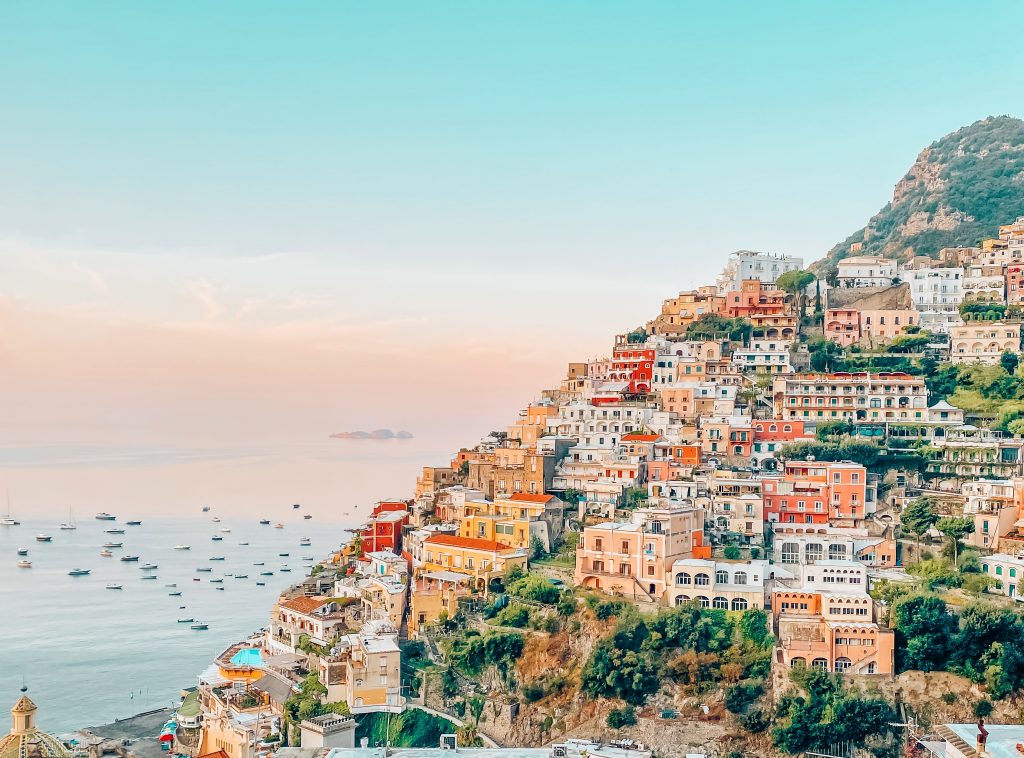

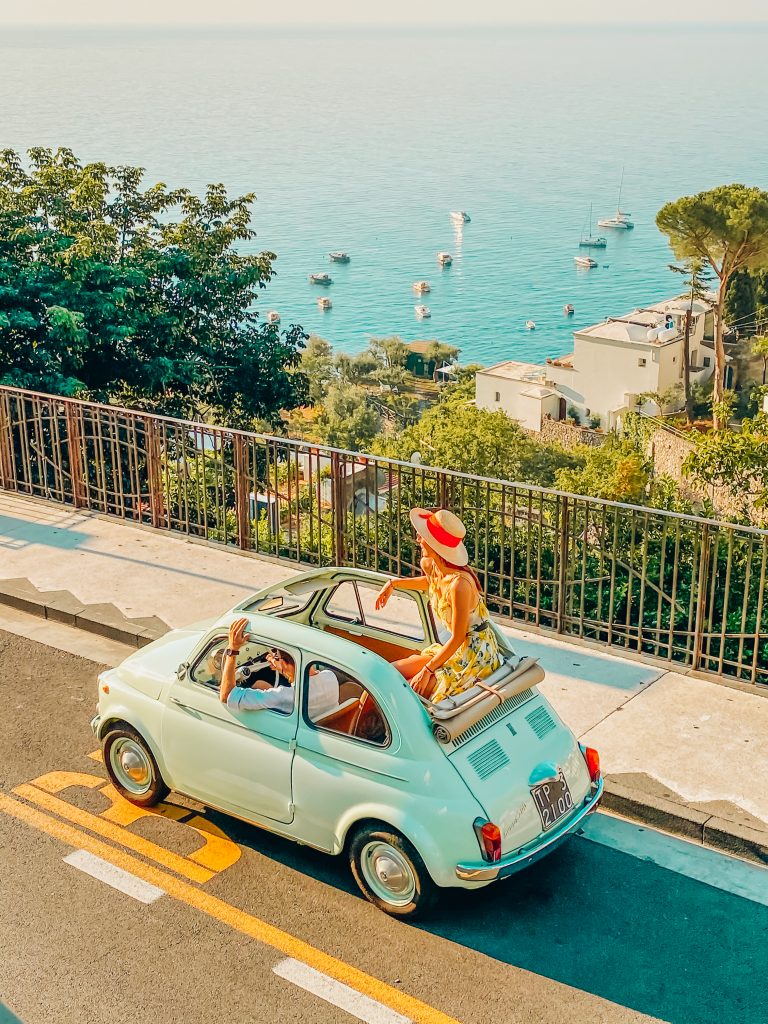
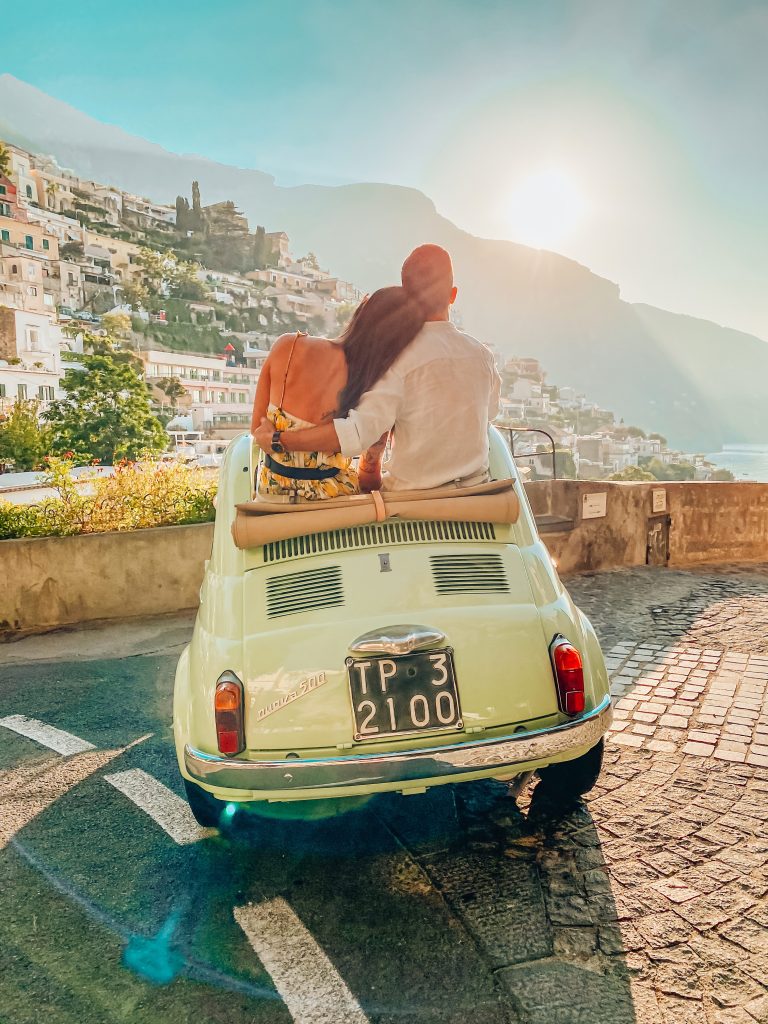
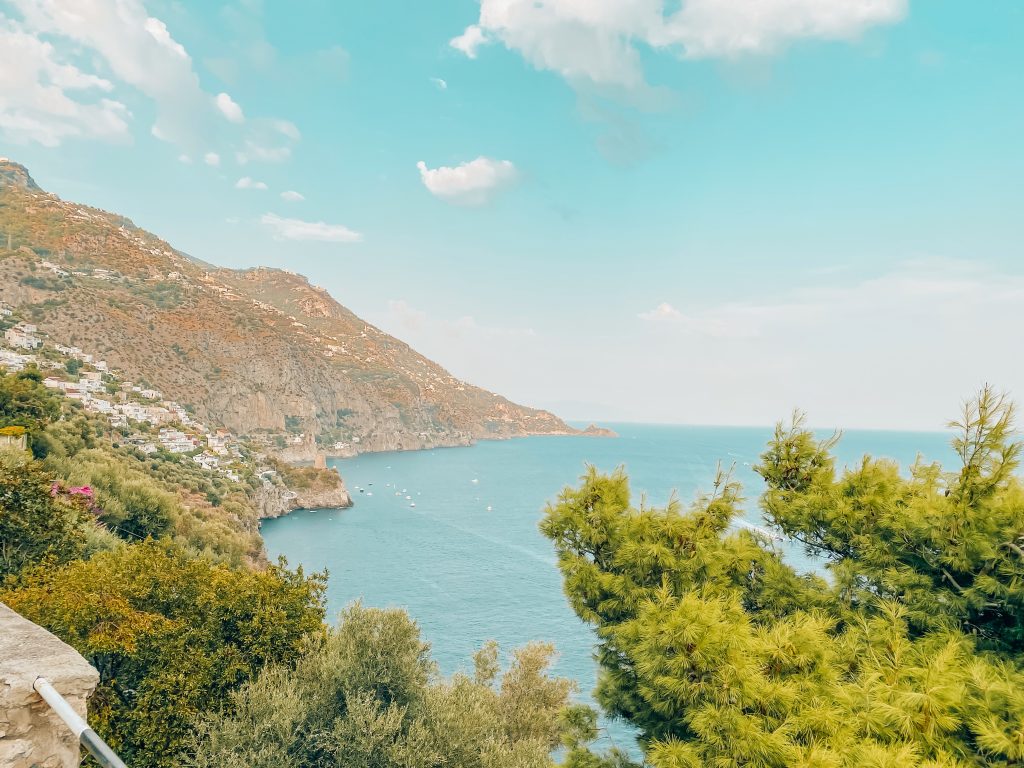
Positano
Il nostro viaggetto comincia nella magica cornice di Positano, per me uno dei posti più romantici al mondo.
É una bomboniera arroccata sulle pendici dei monti Lattari, un infinito dedalo di stradine strette e viuzze scoscese in cui perdersi tra un negozietto ed un caffè.
La prima sensazione è quella di essere stati catapultati in un dipinto ad acquerello, in un’Italia d’altri tempi, durante la Dolce Vita. La cosa che ti riempie occhi e cuore è questo particolare – e a tratti “assurdo” – agglomerato di casette colorate a picco sulle acque azzurre del mar Tirreno.
A primo impatto, si può facilmente notare una delle maggiori attrazioni artistiche di Positano, simbolo della città: la Chiesa di Santa Maria Assunta con la sua colorata cupola in maiolica, fatta di suggestive piastrelle gialle, verdi e blu che brillano al sole.
A pochi passi, la spiaggia di Marina Grande, la più famosa del luogo, che deve il proprio nome alla sua notevole estensione, quasi 400 metri di lunghezza. Di fronte alla spiaggia, si possono facilmente scorgere le isole de Li Galli, un incontaminato arcipelago tra Capri e Positano e secondo la leggenda, rifugio delle sirene incantatrici.
Positano
Our trip begins in the magical setting of Positano, for me one of the most romantic places in the world.
It is a favor perched on the slopes of the Lattari mountains, an infinite maze of narrow streets and steep alleys where to get lost between a shop and a coffee.
The first sensation is having been catapulted into a watercolor painting, in an Italy of the past, during the Dolce Vita.
The thing that fills your eyes and heart is this particular – and at times “absurd” – agglomeration of colored houses overlooking the blue waters of the Tyrrhenian Sea.
At first glance, you can easily notice one of the major artistic attractions of Positano, symbol of the city: the Church of Santa Maria Assunta with its colorful majolica dome, made of suggestive yellow, green and blue tiles that shine in the sun.
A few steps away, the beach of Marina Grande, the most famous one of the town, which owes its name to its considerable extension, almost 400 meters long. In front of the beach, you can easily see the Li Galli islands, an uncontaminated archipelago between Capri and Positano and, according to legend, a refuge for enchanting sirens.
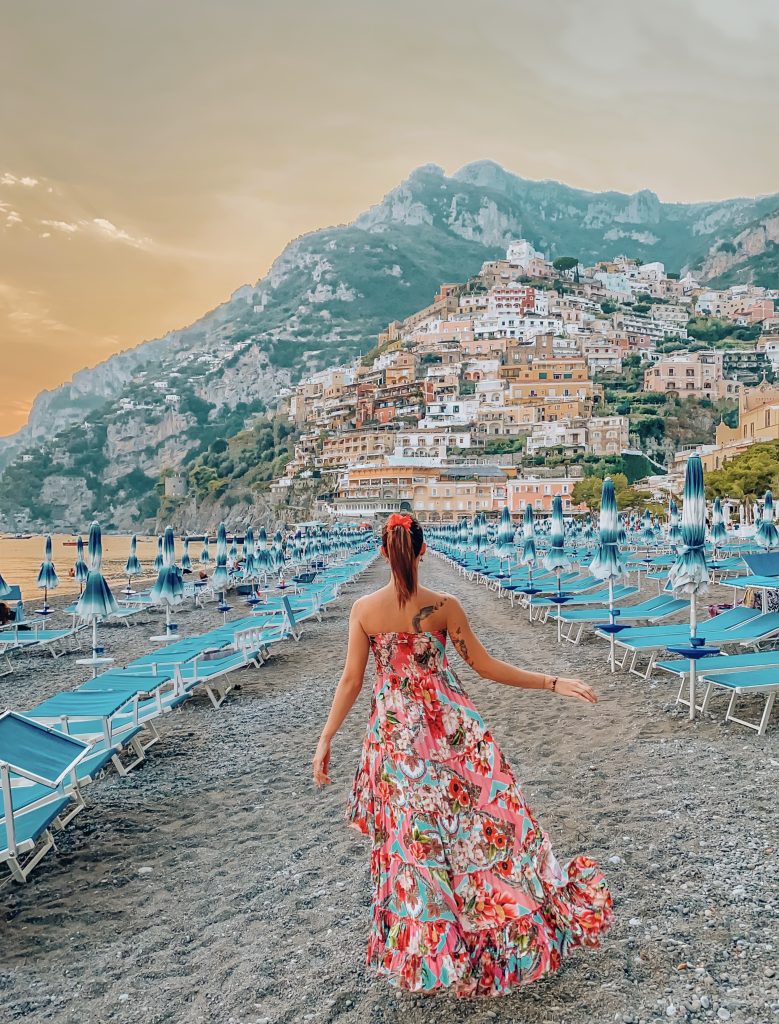

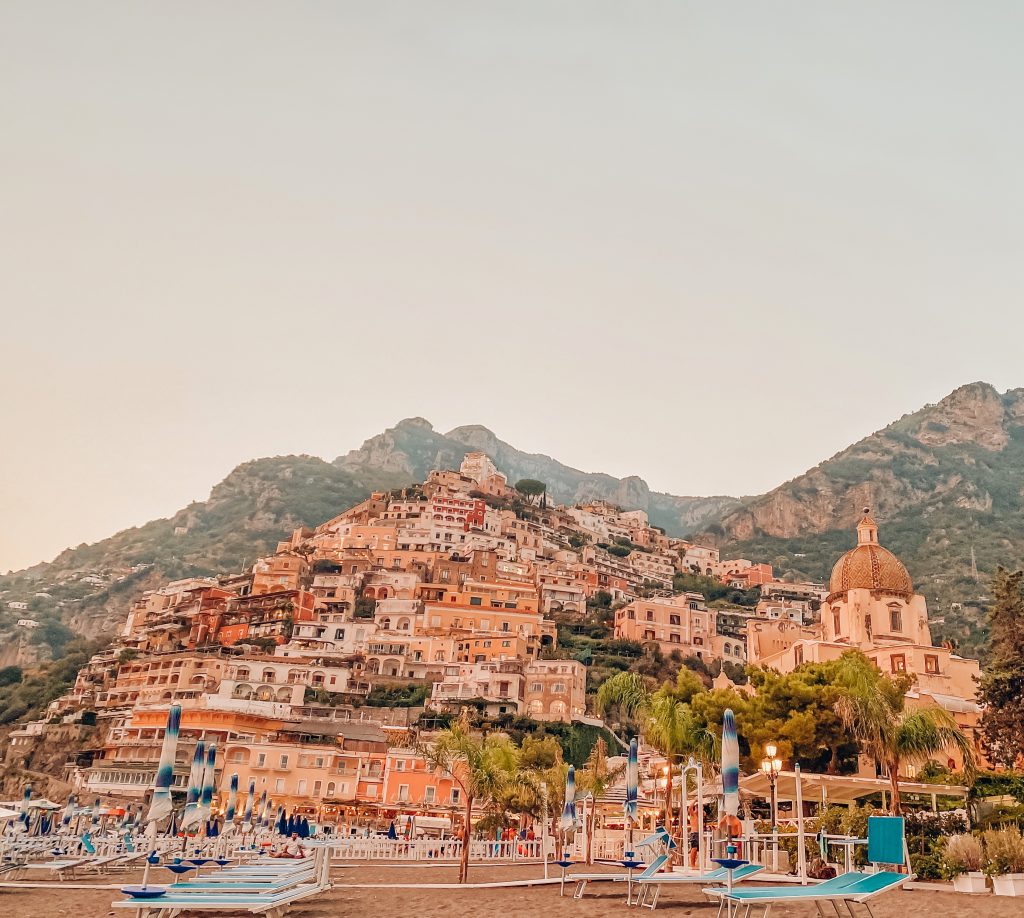

Dove dormire
A circa 15 minuti a piedi dalla spiaggia, situato su uno dei punti più alti e panoramici di Positano, sorge Palazzo Margherita, il cui staff ci ha accolto con il calore tipico di queste zone.
L’Hotel Margherita è stato inaugurato nel 1885, in un elegante stabile ottocentesco, in quello che all’epoca era un piccolo borgo di pescatori posto in una posizione d’eccezione, tra Amalfi e Sorrento.
Artisti famosi, uomini politici, ricchi industriali e nobili provenienti da ogni angolo del mondo hanno soggiornato qui, lasciando nel libro degli ospiti testimonianza della loro vacanza.
Palazzo Margherita è stato un rifugio per coloro che durante gli inverni freddi e piovosi percorrevano in carrozza la Statale 163; mentre, durante le caldi estati mediterranee, l’hotel e il suo ristorante costituivano una tappa obbligata per i turisti e persino per i partecipanti al Giro d’Italia.
Where staying
About 15 minutes walk from the beach, located on one of the highest and most panoramic points of Positano, stands Palazzo Margherita, whose staff welcomed us with the typical warmth of these areas.
Hotel Margherita was inaugurated in 1885, in an elegant nineteenth-century building, in what at the time was a small fishing village located in an exceptional position, between Amalfi and Sorrento.
Famous artists, politicians, rich industrialists and nobles from all over the world have stayed here, leaving a testimony of their holiday in the guest book.
Palazzo Margherita was a refuge for those who traveled along highway 163 on carriage during the cold and rainy winters; while during the hot Mediterranean summers, the hotel and its restaurant were a must for tourists and even for the participants in the Giro d’Italia.
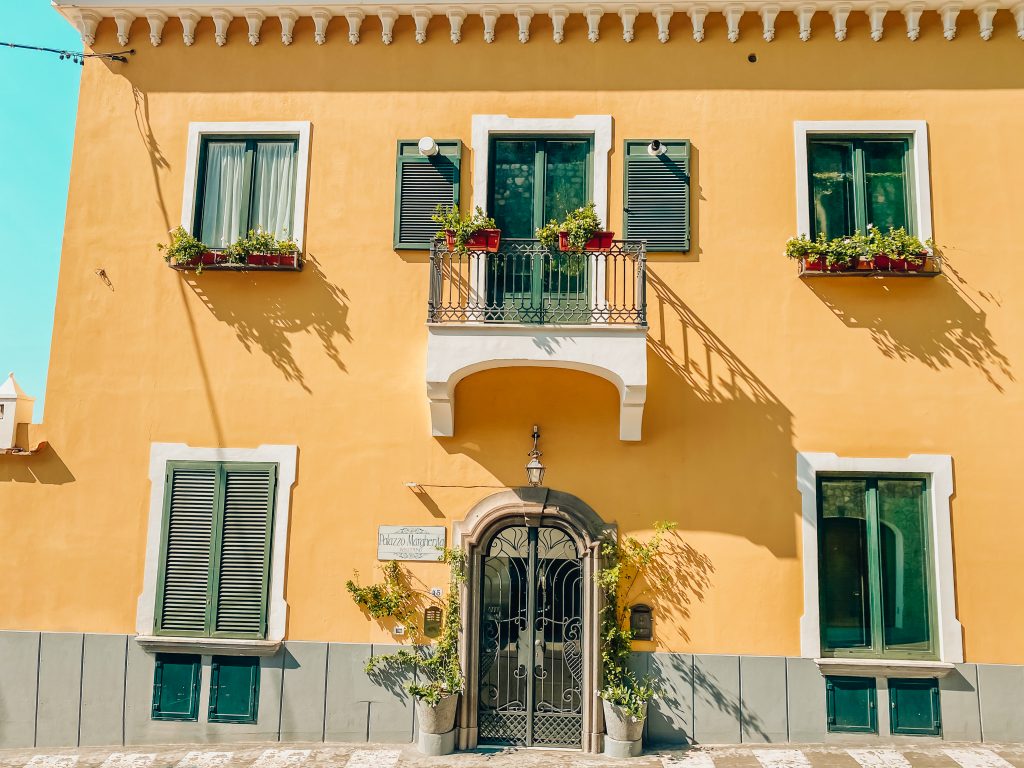
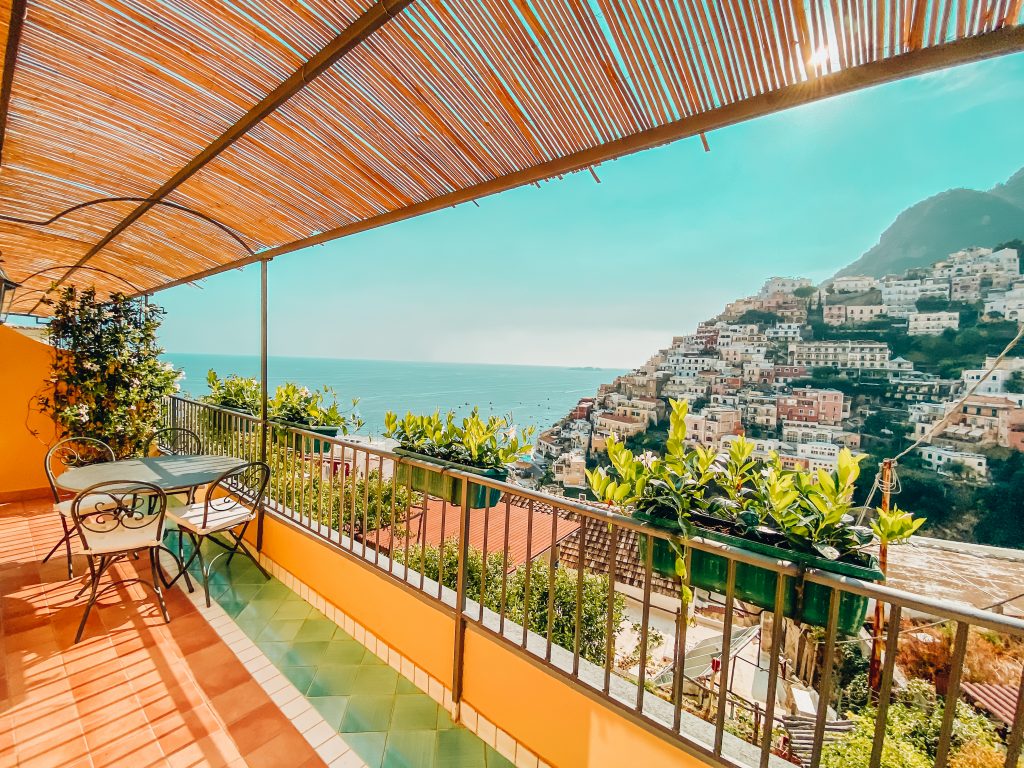
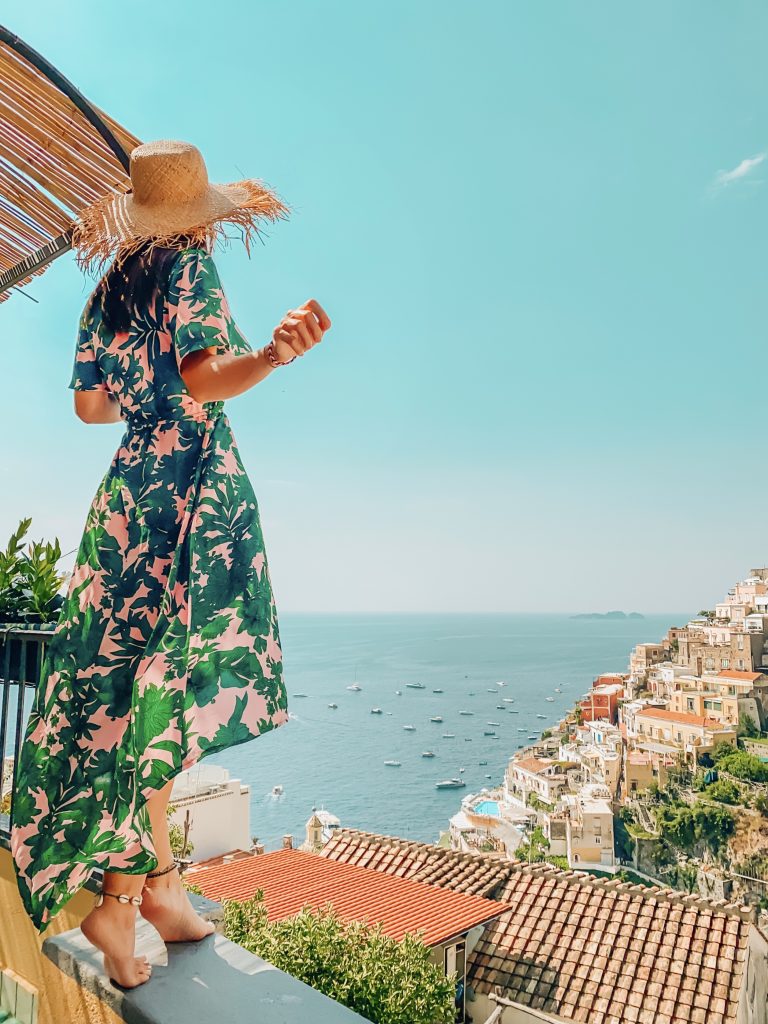
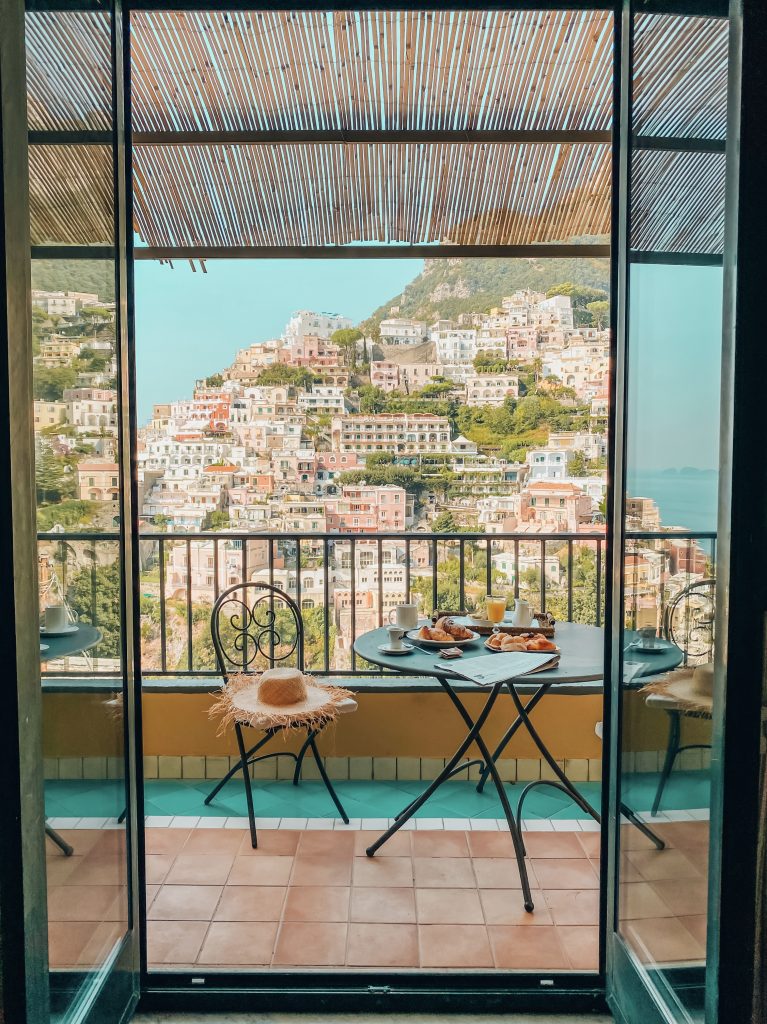
Recentemente, Palazzo Margherita è stato rimodernato per ottimizzare gli spazi e suddiviso in sette unità che rievocano la storia di una delle più suggestive località del Mediterraneo, tutte arredate in stile amalfitano e affacciate sullo splendido panorama di Positano.
Noi abbiamo soggiornato nell’appartamento San Sebastiano così chiamato per la pittoresca e omonima stradina, poco distante da Palazzo Margherita, che in meno di dieci minuti conduce al centro di Positano e alle principali spiagge.
Il bello di questa struttura ricettiva è di sentirsi come a casa propria, ma con tutti i comfort e le comodità di un hotel.
Perfetto per una coppia o per una famiglia, è dotato di due camere con letto matrimoniale e bagno interno, di un soggiorno con divano letto queen size e di una cucina attrezzata.
Dal terrazzo si gode di un panorama da cartolina – quello tipico che si trova su Google se si cerca la Costiera Amalfitana, per intenderci – esattamente la vista che ogni visitatore sogna quando mette piede a Positano.
Recently, Palazzo Margherita has been modernized to optimize space and divided into seven units that evoke the history of one of the most evocative places in the Mediterranean Sea, all furnished in Amalfitan style and overlooking the splendid panorama of Positano.
We stayed in the San Sebastiano apartment, named after the picturesque and homonymous street not far from Palazzo Margherita, which in less than ten minutes leads to the center of Positano and the main beaches.
The beauty of this hotel is to feel at home, but with all the comforts and conveniences of a hotel.
Perfect for a couple or a family, our apartment has two bedrooms with double bed and en suite bathroom, a living room with a queen size sofa bed and a fully equipped kitchen.
From the terrace you can enjoy a postcard view – the typical one found on Google if you search for the Amalfi Coast, so to speak – exactly the view that every visitor dreams of when he sets foot in Positano.
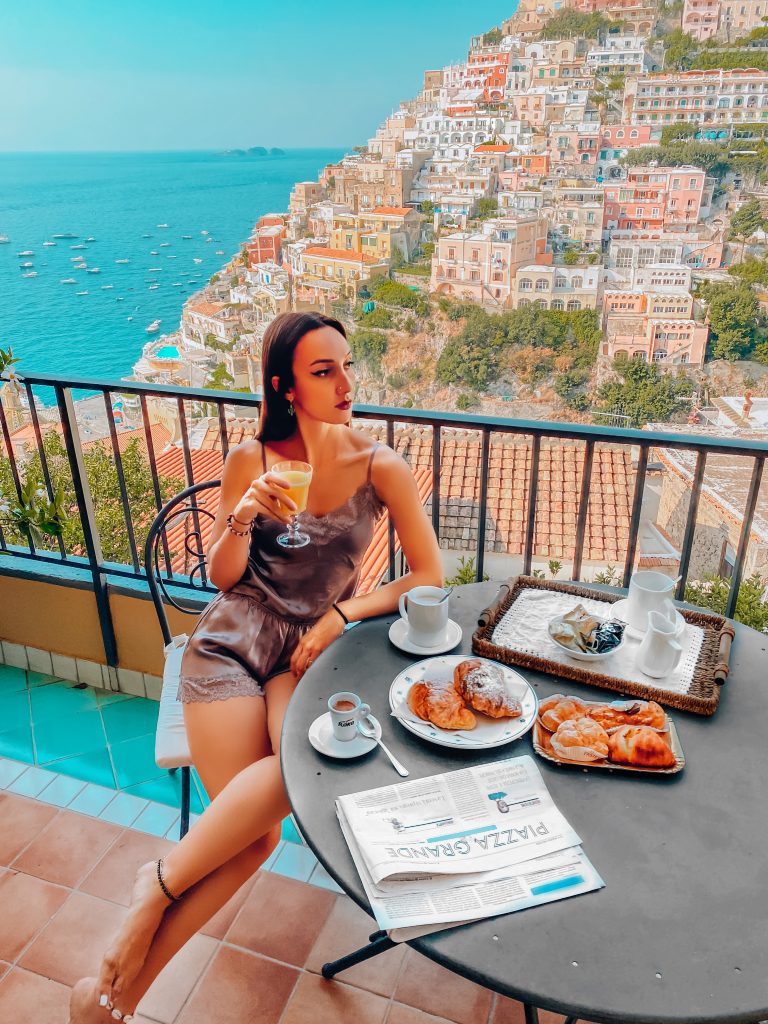
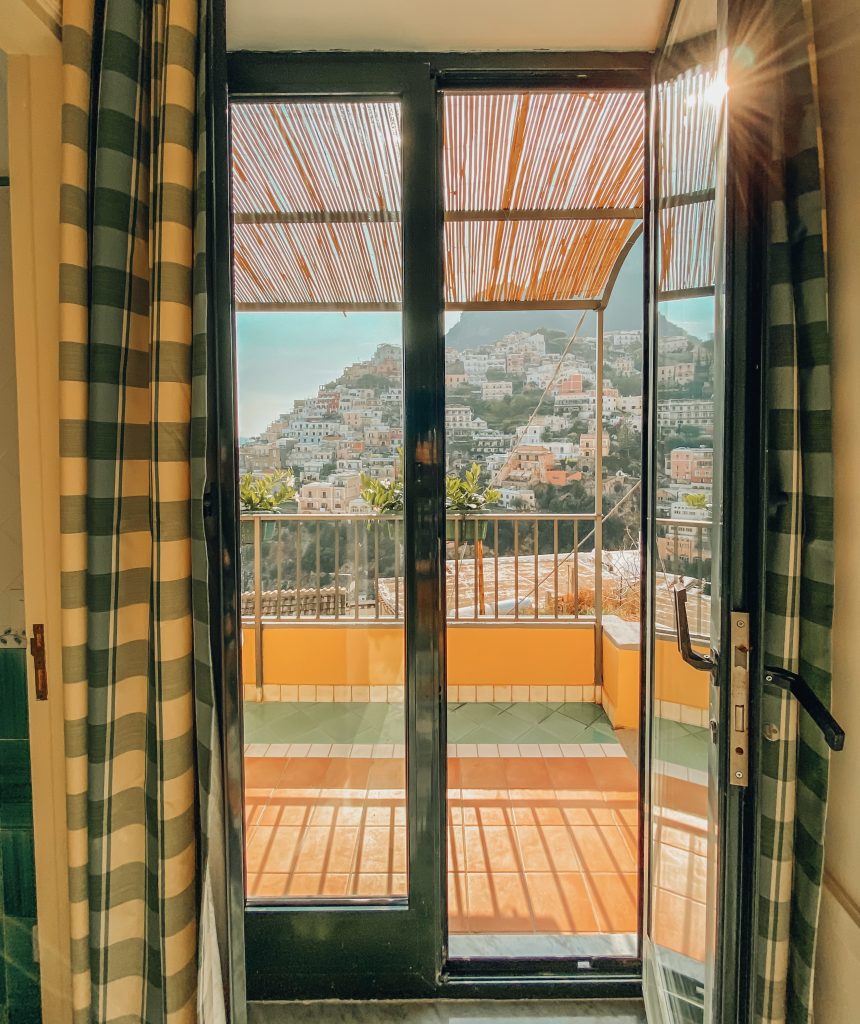
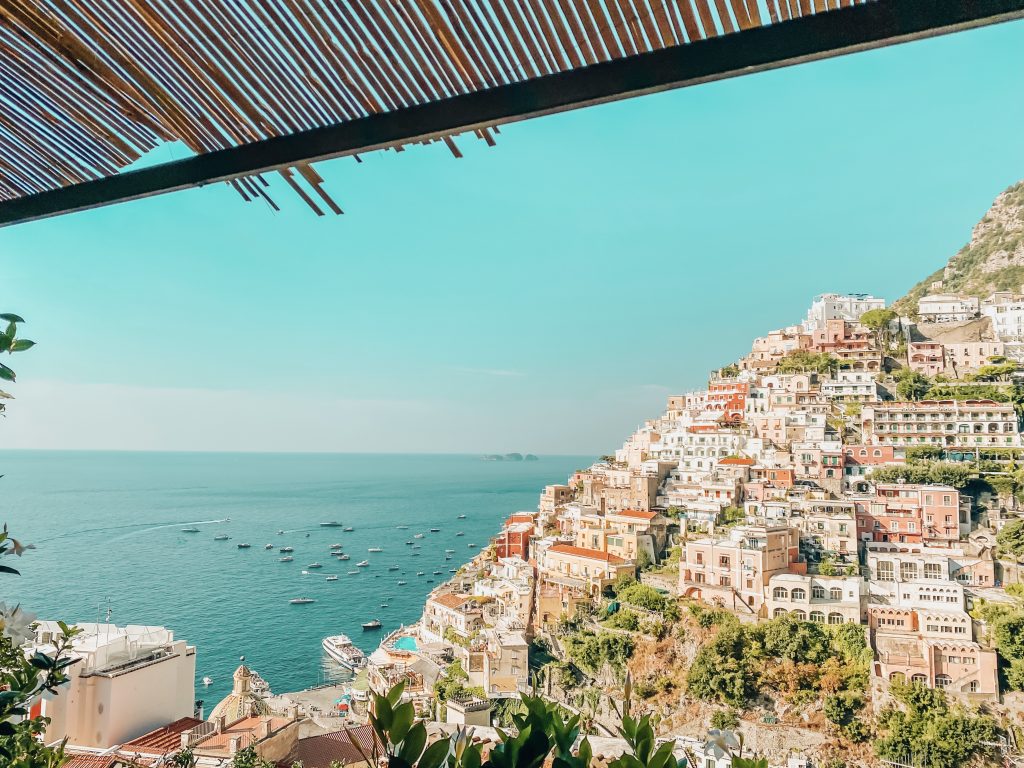
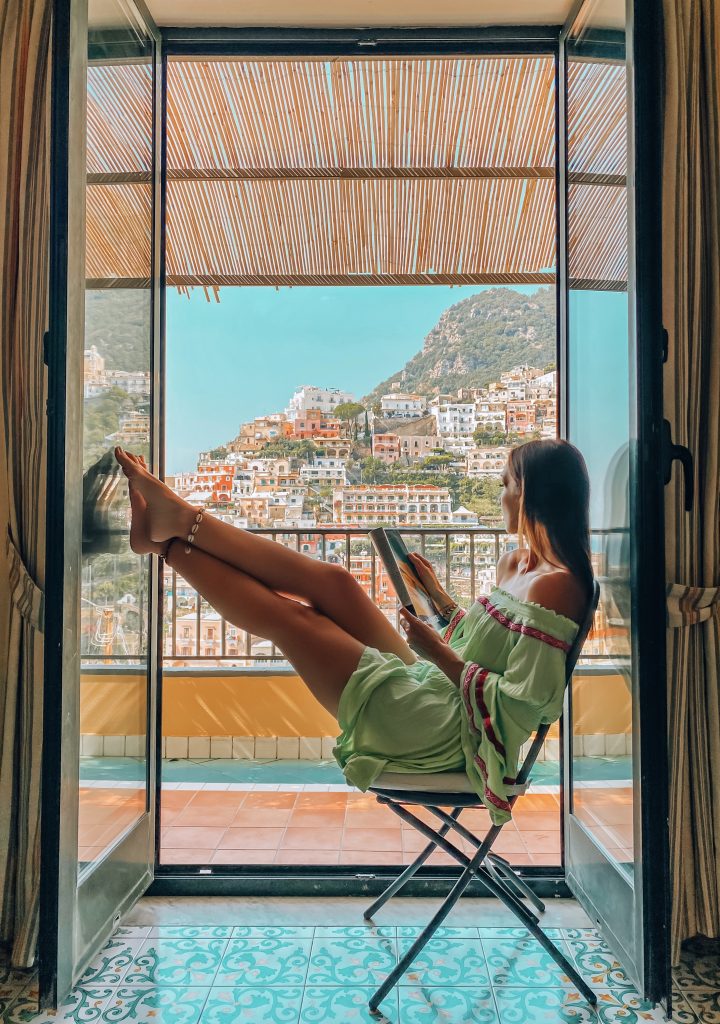
Visitare i dintorni
Durante la nostra permanenza nella bella Positano, ne abbiamo approfittato per calarci nelle vesti di due tipici turisti americani nel periodo della Dolce Vita.
Abbiamo noleggiato la mitica Vespa Primavera, sia per raggiungere più velocemente il lungomare con i suoi fantastici ristorantini sia per spostarci fuori dal paese per visitare il famoso Fiordo di Furore.
Visit the surroundings
During our stay in the beautiful Positano, we took the opportunity to put ourselves in the shoes of two typical American tourists in the period of the Dolce Vita.
We rented the legendary Vespa Primavera, both reaching more quickly the seafront with its fantastic restaurants and visiting the famous Fiordo di Furore.

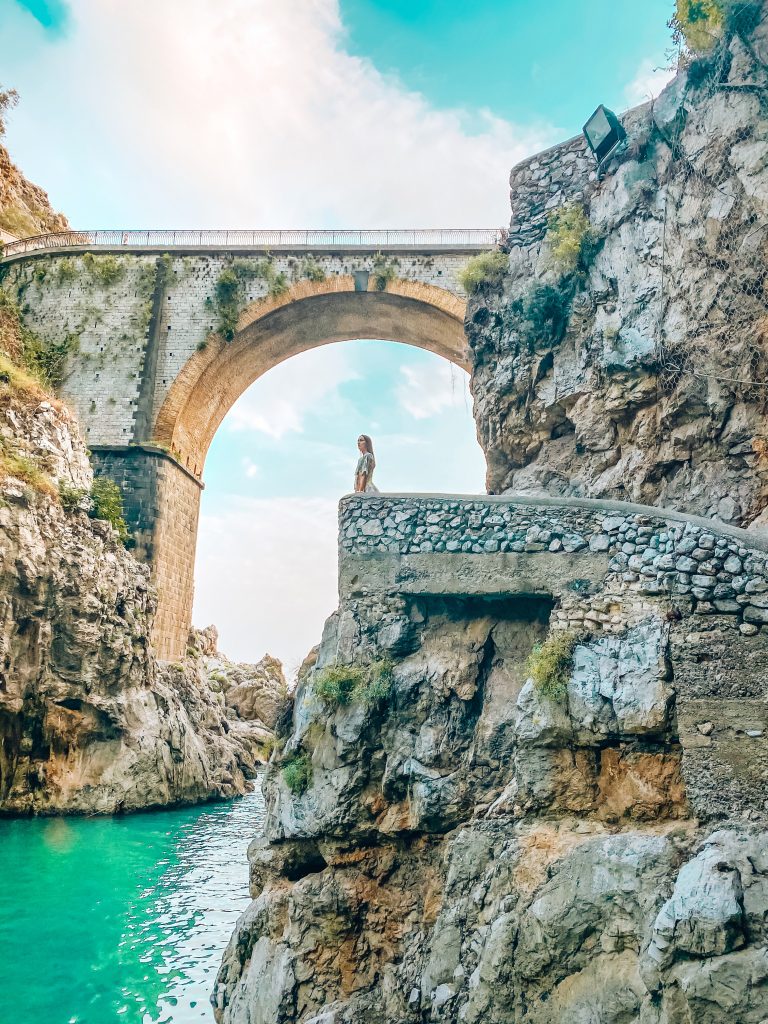
Il Fiordo è costituito da una profonda spaccatura nella roccia ed è attraversato dal torrente Schiato che scorre veloce dall’altopiano di Agerola.
Qui, il sole fa capolino solo qualche ora nel pomeriggio ma l’orario migliore per scattare foto perfette è senza dubbio dopo le 18:00, quando la gente abbandona la piccola spiaggia per tornare a casa.
Oramai, questo posto è diventato così famoso che è davvero difficile non trovare nessuno.
Percorrendo la strada panoramica verso Amalfi, l’abbiamo raggiunta: la tortuosa scalinata che porta a questo posto magico e nascosto. Saremmo rimasti lì per ore!
Il paesaggio che vi si presenta davanti è unico! Un piccolo lembo di spiaggia e alcune barchette di pescatori; un borgo marinaro dove girarono l’episodio centrale del film Amore e dove, ancora oggi, aleggia la tormentata storia d’amore tra Roberto Rossellini e Anna Magnani.
I due si innamorarono del fiordo e comprarono due casette sulla spiaggia, i cosiddetti monazzeni.
Secondo alcuni racconti, durante le riprese del film, cominciarono ad arrivare la prime lettere di Ingrid Bergman che chiedeva un incontro con il regista, scatenando la gelosia della Magnani.
Si racconta che in uno dei ristoranti della zona, l’attrice lanciò addosso a Rossellini un piatto di spaghetti. Dopo la separazione, Anna Magnani non fece più ritorno a Furore e regalò la sua casa al vecchio custode.
The fjord is made up of a deep crack in the rock and is crossed by the Schiato stream which flows fast from the Agerola plateau.
Here, the sun only peeps a few hours in the afternoon but the best time to take perfect photos is undoubtedly after 6pm, when people leave the small beach to go home.
By now, this place has become so famous that it’s really hard not to find anyone.
Along the panoramic road towards Amalfi, we reached it: the winding staircase that leads to this magical and hidden place. We would have stayed there for hours!
The landscape that appears before you is unique! A small strip of beach and some fishing boats; a seaside village where the central episode of the film Amore was shot and where, even today, the tormented love story between Roberto Rossellini and Anna Magnani hovers.
The two lovers fell in love with the fjord and bought two beach houses, the so-called monazzeni.
According to some stories, during the shooting of the film, Ingrid Bergman’s first letters began to arrive asking for a meeting with the director, triggering Magnani’s jealousy.
It is said that in one of the nearby restaurants, the actress threw a plate of spaghetti at Rossellini. After the separation, Anna Magnani never returned to Furore and gave her house to the old keeper.
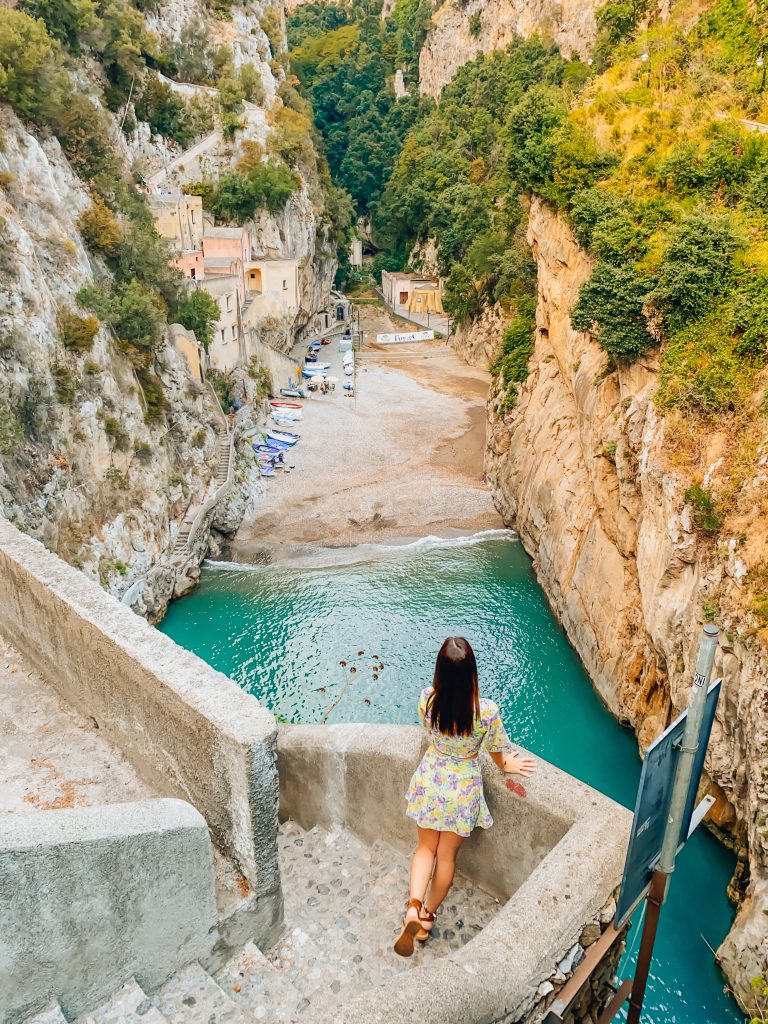
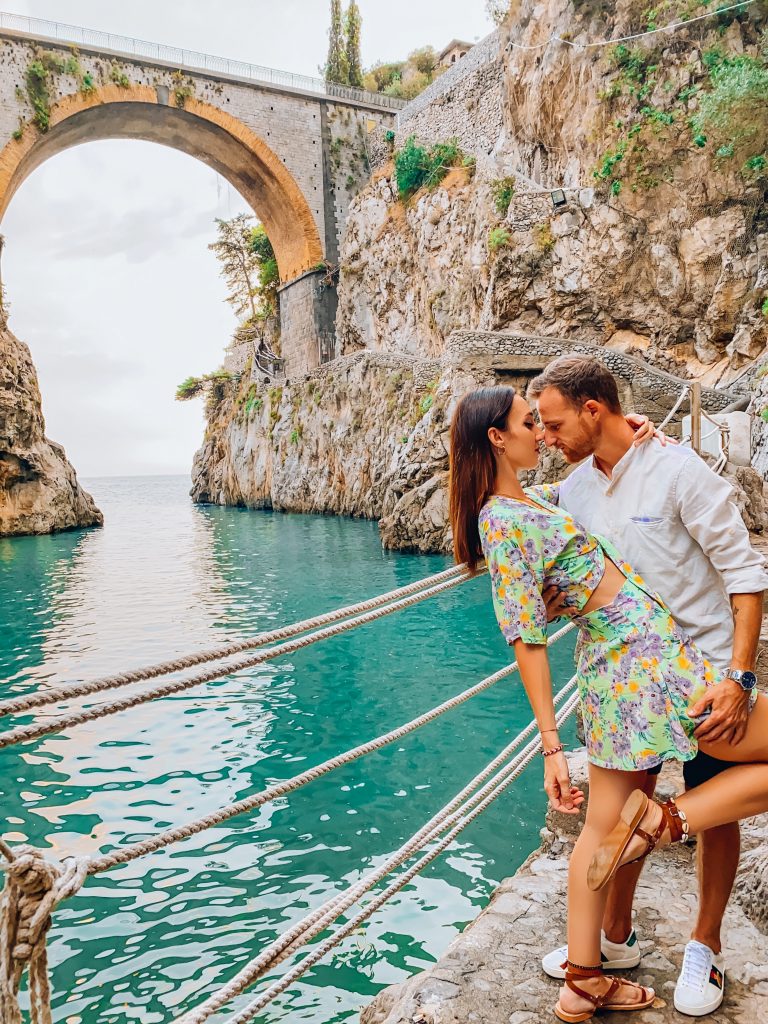
Parcheggiata la Vespa a Palazzo Margherita, grazie agli amici di Positano Vintage Dream, abbiamo potuto scoprire i punti panoramici più belli di Positano e Praiano e scattare tantissime foto alle prime luci del mattino, a bordo di quel mito senza tempo chiamato 500. Cappottina abbassata, capelli al vento, e via!
Ma non finisce qui; nel prossimo articolo vi parlerò di Amalfi, di un convento convertito in hotel di lusso e di Ravello con i suoi affascinanti giardini…
Parked the Vespa at Palazzo Margherita, thanks to the friends of Positano Vintage Dream, we were able to discover the most beautiful viewpoints of Positano and Praiano and take many photos at the first light of the morning, aboard that timeless myth called Fiat 500. Hood lowered, hair in the wind, and go!
But it doesn’t end there; in the next article I will tell you about Amalfi, a convent converted into a luxury hotel and Ravello with its fascinating gardens …
